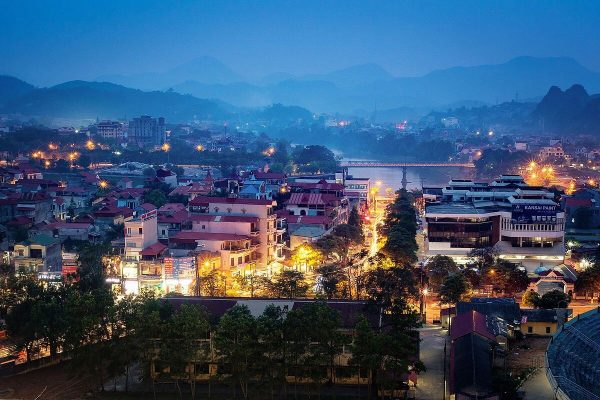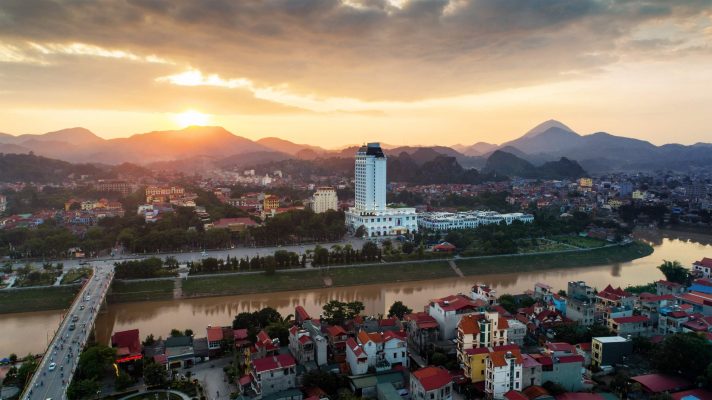Throughout the history of the country, Xu Lang is not only known as the remote border area of the country, which witnessed many glorious victories of the nation in the resistance wars against foreign invaders but also emerged. Reputation is a charming mountainous region, a cultural region imbued with national identity. Lang Son is a land with great potential for tourism development, reflected in the cultural thickness associated with traditions, religions, and beliefs with more than 300 unique traditional festivals. Along with the cool climate of the Mau Son mountain region, which has attracted a lot of tourists in recent years, Lang Son tourism is expecting a breakthrough to develop and further promote tourism products. local staple calendar. If you like the experience, you can completely join the Lang Son touring teams of young people, if you like to be more gentle, you can go on spiritual tours or learn about the culture and history of Lang Son. Any form will bring you very strange and interesting experiences.
Table of Contents
General introduction about Lang Son
Lang Son is a mountainous province in the Northeast, located at the National Highway 1A, 1B, 4A, 4B, 279 passing, and is the junction of economic exchanges with western provinces such as Cao Bang, Thai Nguyen. Bac Kan, the East as Quang Ninh province, the South like Bac Giang, Bac Ninh, the capital Hanoi and the North bordering China, with 2 international border gates, 2 national border gates and 7 pairs of border markets gender. On the other hand, there is international intermodal rail, which is a very favorable condition for economic, science – technology exchange with southern provinces in the country, with China, and thereby to Central Asian countries, Europe, and other countries,…
Lang Son is a province with great advantages in the development of the tourism industry, because of the rich and harmonious combination between geographical location, nature, history, and people. Lang Son is a border area and border gate in the North of our country, located on a very convenient road connecting Hanoi capital, regularly attracting tourists to visit, exchange, exchange, and activities trade between Vietnam and China.
In addition, nature has endowed Lang Son with many natural caves, mountains, and beautiful landscapes with a cool and pleasant summer climate, which is considered an ideal resort for tourists. From afar, visitors come such as Tam Thanh cave, Nhi Thanh cave, To Thi lady mountain, Mau Son tourist area … Lang Son is also famous for many historical places such as Muc Nam Quan pass, Chi Lang pass, Mac Dynasty many times witnessed the battles that drove the invaders during the process of national construction and defense, or with the Bac Son culture, the Bac Son Revolution base. Industrious people, along with festivals and cultural traditions, make Lang Son always an attractive tourist destination for visitors from all over the world.
When should travel to Lang Son?
To have a fun and safe trip to Lang Son, you only need to note that if you come to Lang Son in the rainy season (equivalent to the summertime of the North), you need to follow the weather forecast to avoid going. on heavy rains, it causes flooding and road landslides.
- Choosing summer weather to rest or winter if you want to see the snow is the right time if you choose to travel to the painting pattern.
- January (lunar calendar) if you want to participate in special festivals of ethnic groups in Lang Son province such as Tam Thanh pagoda festival, Ky Lua firecracker festival,…
- At the end of August and early September, if you want to go to Lang Son to enjoy the specialties “Na Đu Dây” Chi Lang
- Around the end of July and the end of November is the ripening season of Bac Son, you should pay attention to this timeline. At this time, going to Bac Son to hunt for pictures of golden rice is fine.
Guide to Lang Son
By Public transport
By Road
Lang Son is about 180 km northeast of Hanoi capital and connected to the capital by the highway Hanoi – Lang Son, bus from Hanoi to Lang Son runs regularly during the day from My Dinh bus station, If you do not want to take a bus or you simply want to combine Lang Son with some other places such as Cao Bang, you should ride a motorbike from Hanoi, it takes about 4-5 hours depending on the travel speed. of your group.
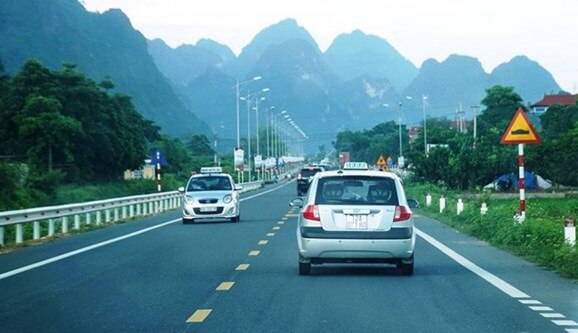
By Rail
Every day from Hanoi Station, there are trains to Dong Dang, the train departs from Hanoi at 7:05, stops at Lang Son City at 11:20 am and the last stop in Dong Dang is 11:40. For those who cannot travel by car, you can choose this train option.
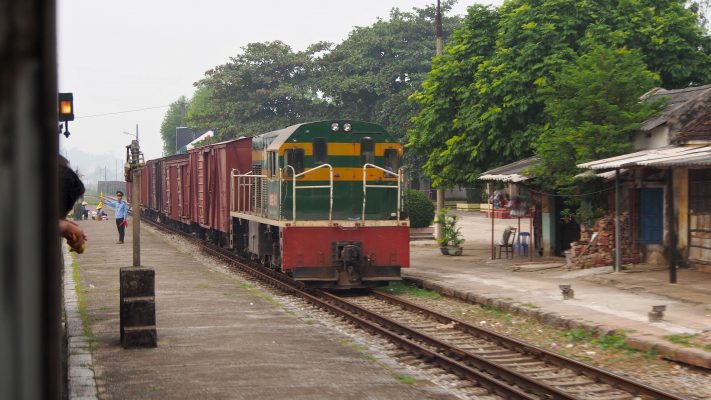
By Private vehicles
With private transport, it only takes you about 4-5 hours to get to Lang Son, depending on the destination you choose. From Hanoi, you just need to cross Phu Dong Bridge and go straight along with the Hanoi – Lang Son highway, the distance is about 180km. If you go to Mau Son, after reaching Lang Son City, you need to go about 20km more.
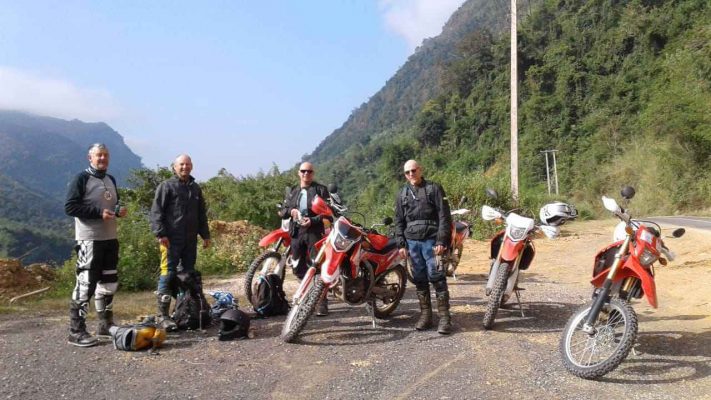
Commuting in Lang Son
By Taxi
This is a popular means of transportation in most localities, if you go in a large group you can use the same taxi as a means of transportation, it is not high to divide per person. From the center of Lang, Son city to some places like Mau Son or the border gate area is also quite close, using a taxi is also quite convenient.
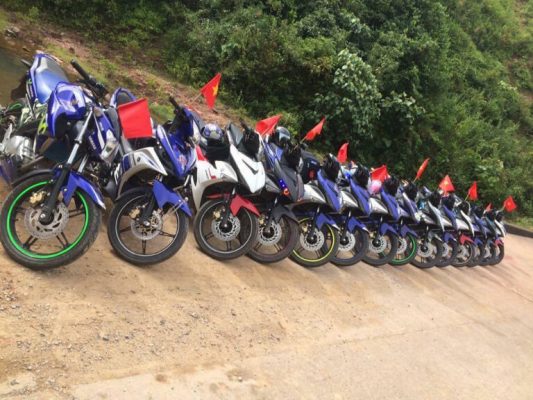
Rent a motorbike in Lang Son
If you only travel to Lang Son, you can choose to ride a bus and rent a motorbike in Lang Son City, motorbike rental locations you can ask at the hotel where you live.
Staying in Lang Son
Hotel and motel in Lang Son
The system of hotels and motels in Lang Son is quite diverse and plentiful for you to choose from. In Lang Son City and Mau Son tourist areas, many quality motels are acceptable and cheap, in other districts though. There are not many choices but you can also stay at the People’s Committee guest houses of those districts.
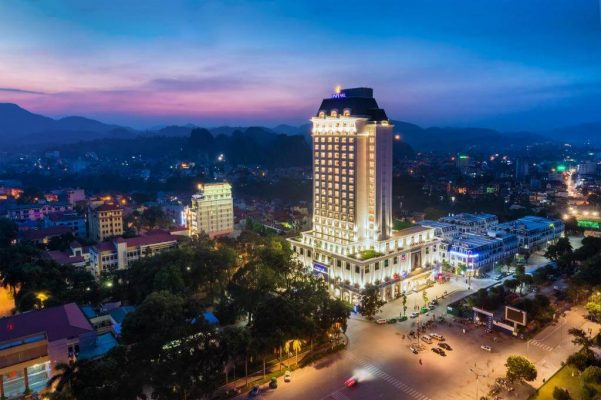
Homestay in Lang Son
Being a mountainous province in the Northeast region with many long-standing cultural traditions, Lang Son has cultural features imbued with the national identity of the mountainous region, especially the unique culture of the Tay – Nung people. Based on natural, cultural, social conditions, favorable facilities, the model of a community-based tourism culture village in Lang Son has been gradually formed, concentrating mainly in Quynh Son commune, Bac Son. Especially in the past few years, along with the number of tourists flocking to Bac Son every time the rice is ripe, these forms of community-based tourism have also become a unique tourism product to keep visitors coming to Bac Son. in particular and Lang Son in general.
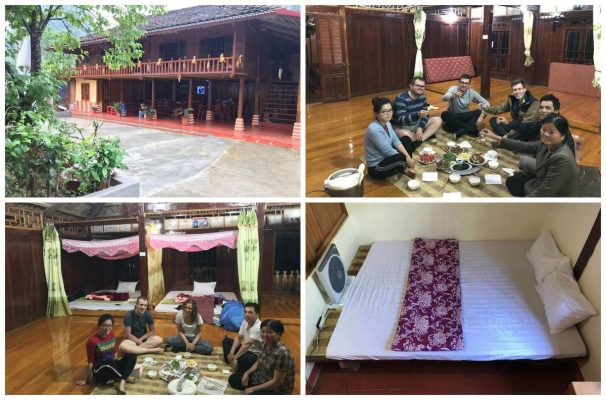
Tourist attractions in Lang Son
Throughout the history of the country, Xu Lang is not only known as the remote border area of the country, which witnessed many glorious victories of the nation in the resistance wars against foreign invaders but also emerged. reputation is a charming mountainous region, a cultural region imbued with national identity.
Lang Son City
Fairy Temple – Fairy Well
Caves of Tien Pagoda and Gieng Tien: About half a kilometer from Ky bridge, on the way to Mai Pha, there is a rocky mountain shaped like an elephant protruding in the middle of the field. The statue mountain, where there is the Tien Pagoda Cave, is one of the bowl scenes that Ngo Thi Si has recorded. Chua Tien Cave Located halfway up the mountain, the entrance has 64 steps, the secondary door facing east, with a porch door, and a way to the Thu Thuy lake.
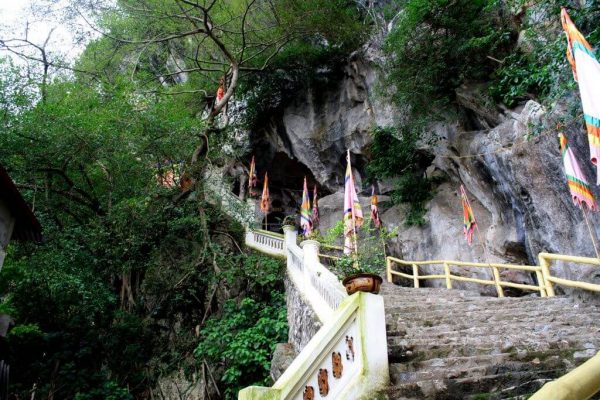
Tien pagoda has the name Song Tien Tu, founded by the villagers of Phai Luong under the reign of King Le Thanh Tong on Dai Tuong mountain next to Tien well. Later, the pagoda was damaged, so people moved to the present Dai Tuong mountain cave.
Tien Phat pagoda worships Buddha, Mau, and Duc Thanh Tran, has a “pre-Buddhist post-Thanh” layout, including the three-sanctuary worship Buddha outside and the shrine of Mother and Holy Tran on the inside. This place also preserves a rich epitaph system of writers and poets, including the song “Tran Thi Bat Canh” by Ngo Thi Sy in praise of the natural beauty of Lang. Every year, the Tien pagoda opens the festival on January 18th of the lunar calendar, together with Nhi Thanh – Tam Giao pagoda (15th – 17th of lunar January) and Tam Thanh (15th lunar January) create a joyful celebration.
Behind Voi Mountain – The Fairy Temple in the middle of the mountain on a wide rocky surface is Fairy Well, a 20cm wide mouth with precious water flows all year round.
Ky Cung Temple
Located in Vinh Trai ward, on the north bank of Ky Cung River. The temple is considered a sacred place, which is a place to worship Giao Long (the god of water) with the task of keeping rain and wind all year round.
The history of the Temple is also associated with the story of the great mandarin Tuan Tranh, sent by the Tran dynasty to defend Lang Son, during his stay in Lang Son, the commanders defeated the enemy, and many soldiers died. He was again falsely accused of lewdness and had to jump into the Ky Cung River to prove his innocence. Due to his pure heart, he was spiritually transformed into a pair of snakes (Mr. Coc – Mr. Dai) as the god of the river living at Ky Cung temple. Later, his injustice was proved and resolved by a Le dynasty general, Ta Admiral Han of Than Cong Tai district (worshiped at Ta Phu temple). Therefore, there is the custom of the Ky Cung temple festival (also from 22 to 27 of the first lunar month like Ta Phu temple), there must be a procession ceremony of the big man Tuan Tranh to Ta Phu temple to give thanks and Than Cong Tai. This explains the close relationship between the two festivals Ky Cung – T Phủ.
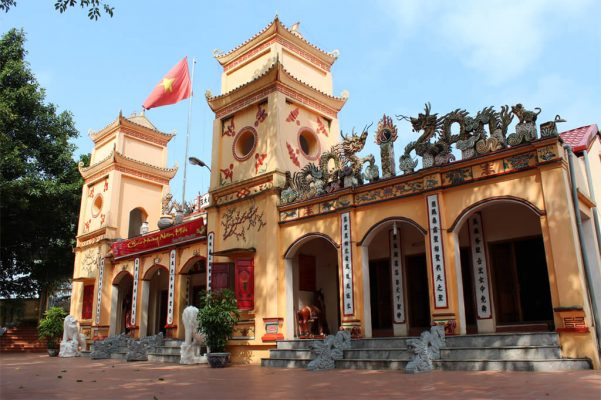
In the temple, there is Ky Cung stone wharf which is one of eight beautiful scenes of Lang Son inscribed in the old “Tran business bowl scene” Ngo Thi Sy called with the name Ky Cung Thach. The reason is that according to historical records, in the past, any march or journey of messengers going back to China had to pass through this place. Boats and boats were close, both banks of the river were always crowded because people or mandarins gathered. Ky Cung river section in this section has many rocks blocking in the middle of the river, boulders protruding on the water surface, waves crashing against the rock according to the river level, up and down forming white foam waves, overflowing all over the river. Trang Giang strip looks very spectacular. Legend has it that the Vietnamese envoys every time they go to China to stop at the stone wharf, prepare offerings to burn incense at Ky Cung temple and pray for a peaceful and successful trip.
Today, Cau Ky Cung is built right next to the stone wharf, connecting the two banks of the North and the South of the Ky Cung River, dividing Lang Son City into two areas, and the North bank is the place of living and trading of the city people. Lang Son, on the south bank, is the area where the administrative agencies of Lang Son are concentrated
Citadel of the Mac Dynasty
Nha Mac Citadel located in Tam Thanh ward, Lang Son city, is a military architectural relic reflecting the feudal period of Vietnam. According to the remaining documents, the citadel was a dangerous military base blocking the only path connecting from the North to the South, measuring Mac Kinh Cung built in the sixteenth century as a base against Le – Trinh.
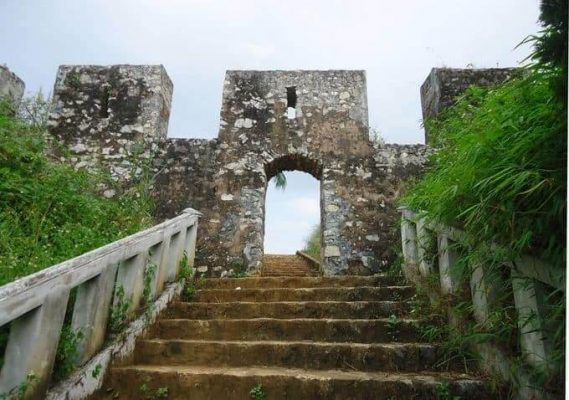
The current remains include 2 segments of the wall about 300m long, the wall about 1m wide, built with large stones in the middle of the canyon. While standing in the shadow of the ancient ocean, watching the scenery, there was a bit of dazed thought about the old carriageway.
The road from the foot of the hill to the gate is now many straight steps, looking up at the gate as if it were far away and small. Arriving at the place to see the scene is very airy. Standing inside, seeing more and more clearly recognizes the prime position of the land, in front of it is the valley of rice fields, then to the busy village, followed by the mountains, the mountain pants followed by the same message.
The ramparts are not evenly spaced, the height is not equal, the stone surface is covered with moss, black with a bit of gray. The soil below is dark red with a little gravel.
Nhi Thanh Cave – Tam Giao Pagoda
Nhi Thanh Cave was discovered and embellished by the famous Ngo Thi Si when he became a Quan Doc Tran Lang Son from 1777 – 1780. He was a holy sage who had great merit in expanding the land and settling the people. born and built Lang Son into a busy commercial area. During his travels in the mountains, he discovered Nhi Thanh cave and manicured the construction of Tam Giao pagoda, Dinh Duyen Quan, Thach Mien is, Thuy Tuyen porch, Trai apple. Ngo Thi Si started the embellishment from Trong Thu month of Ky Hoi year (i.e. May 1779 lunar year) to Manh Thu month (ie July) of the same year, then completed.
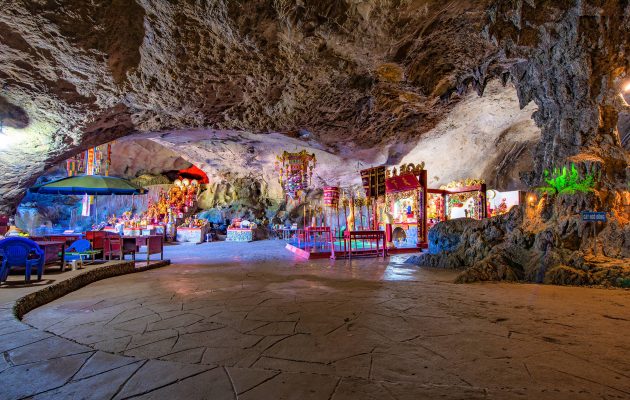
Ngo Thi Si is from Ta Thanh Oai village, Thanh Oai district, former Ha Tay province. When he was awarded as a mandarin, to commemorate his homeland, he used two Chinese characters from the homeland to give his nickname: Nhi Thanh Cu Si, and later when he discovered Nhi Thanh cave, he used the same name. That’s why the cave is called Nhi Thanh cave. Here, the ancients carved the portrait of Ngo Thi Si on a small rocky hole at an altitude of 8m in the Old Kiet posture and leaned against the cliff-like his real life. This is a portrait of unique artistic value created in stone but does not lose the softness of the body (in Ma Nhai Bai Ky Dong Nhi Thanh, it is clear about this). Today, to repay the gratitude of Ngo Thi Si, the people in the area have built his altar right in Nhi Thanh cave.
On July 28, 1779, on the lunar calendar, Ngo Thi Si held a festival here, at Tam Giao pagoda there was a ceremony, in Nhi Thanh cave, eating, singing, water puppetry, and other performances in 7 days 7 nights. In Ma Nhai stele “The song of the Nhị Thanh cave”, there is a record about this as follows: On the first night of the festival, a tiger as big as a cow approached the stage of Thong Thien cave around the ceremony and then went but could not return, so the people at night are no longer afraid; There was one Giao Long with red beard and tail going to the water puppet show like wanting to see the game, chasing it, and not going. When the show ended, they couldn’t see it anymore, so everyone attending the festival thought it was strange. Ngo Thi Si then made a statue of the Tiger on the right and the statue of Giao Long on the left in front of the entrance to Nhi Thanh cave to remember the two sacred animals.
To the right of Nhi Thanh cave is Tam Giao pagoda (Tam Giao Tu). Ngo Thi Si thinks that religion is only one, Buddha – Lao just has a different name, but the content is all Grapes. Although Confucius, Lao Tzu, and Buddha Shakyamuni were named three, the real religion was one. Therefore, he brought 3 religions into the same temple and called the Tam Giao pagoda.
Tam Giao Pagoda is also a special type of architecture: No roof, no house, an altar is placed in caves, rocky holes, giving us a natural feeling with magnificent stalactites, creating more spirituality. sacred temple. Currently, in the pagoda, there are worship houses such as Cong Dong Palace, Thanh Mau Palace, Son Trang Palace, Tam Bao Palace …
To the left of Tam, Giao pagoda is the entrance road to Nhi Thanh cave and the crystal clear Ngoc Tuyen stream hidden under a grove of trees that looks poetic and poetic. Outside the cave, there is the Chinese word “Nhi Thanh Dong ” with large sizes carved into the cliff. Inside the cave on the right wall is the Ma Nhai stele system with 20 epitaphs of all sizes alternating. The beer content mainly praises the natural beauty and people of Xu Lang, recording the discovery and creation of Nhi Thanh cave and Tam Giao pagoda of the predecessors, including the song “Nhi Thanh Dong Phu” know as Phú Động Nhị Thanh by Ngo Thi Si written in 1779 with his self-proclaiming poem when he first discovered and named the Nhi Thanh cave and the writings of Dr. Le Huu Dung – Phung sent the governor of Lang Son country to join the army. 1780 crop with many writings by other famous poets.
Going about 100 meters more, passing 2 “Kieu” bridges spanning winding streams opens a large space with soaring roofs, with a clear door, inside there is a waterfall falling along a rocky ravine. Ngoc Tuyen stream flows underground in the background, creating mysterious sounds. In 1779, Ngo Thi Si wrote in “Bai Ky Dong Nhi Thanh” that: “The boatman must bend down, push the boat with handrails to push the boat through and because the stream flows under the cave background, the stream cannot be seen. where”.
At the foot of the waterfall, Ngo Thi Si placed a high ground for a stage. Here he chose to be the entertainment center on the festival day to celebrate after the completion of the construction of Tam Giao pagoda and renovation of Nhi Thanh cave, which later became a meeting place for performing and performing arts of the people. during the years when the US imperialists bombed the North of our country. On the roof of the cave, there is a small slit of sunlight shining through the cave, which is called Thong Thien cave.
Round the stage behind the stage through the turn to reach Giao Long cave, we feel like being lost in the “stalactite garden”, the widest place up to 25m, the eye-catching length, the ceiling, and the cave floor are relatively flat with various stalactites. with different shapes: the image of an elephant, the picture of a crawling turtle … Many stone pillars stand by the edge of the stream to support the ceiling of the cave, many stalactites, rocky sprouts are high and low like large curtains on the two sides of the cave. The natural scenery is wonderful. Continue to the back through 3 bridges to reach the back gate to the outside. From here, you can see the Tam Thanh cave entrance with a distance of 500m.
Tam Thanh Cave – Tam Thanh Pagoda
Tam Thanh Cave and Tam Thanh Pagoda are historical and cultural relics and famous landscapes of Lang country. In Tam Thanh cave, there is a pagoda, called Tam Thanh pagoda, and another name is Thanh Thien pagoda. In the book “Dai Nam Nhat Thong Chi” by the Nguyen Dynasty shop, it is written: “This pagoda is located in a rocky cave in Vinh Trai commune, Chau Thoai, with pure stalactite and bare dust. The local people together with the Minh Huong people worship the Buddha statue, another name is Thanh Thien Pagoda “.
About the date: Through ancient bibliographic documents, researchers believe that the Tam Thanh pagoda dates back to the Le dynasty. The oldest stele in the present pagoda is “Restoring Thanh Thien cave”, crafted in the second year of Vinh Tri (1677), the content of the stele records the restoration of the relic. It can be said that this temple existed before.
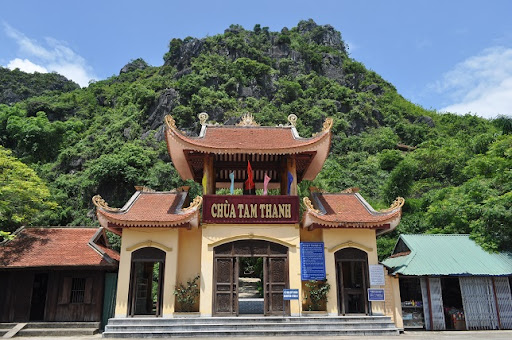
About the name: According to the researchers: This place, in the past, was the place of worship of Dao Dao, so Tam Thanh means Ngoc Thanh, Thuong Thanh, and Thai Thanh. These are the three highest palaces that are considered to be the three heavenly signs in which each palace is governed by a deity, namely Nguyen Thuy Thien Ton (Jade Emperor), Linh Bao Thien Quan (Heavenly Emperor), and Dao Duc Thien Ton (Thai Thuong Lao Quan). Later, due to the influence of many factors, Taoism was blurred in the minds of local people, people brought elements of Buddhist worship to worship in the temple. Currently, in the pagoda, there are worships such as Tam Bao Palace (worshiping Buddha), Cung Duc Ong, Thanh Mau Cong Palace, Ngu Dinh Palace, Cam Palace (place of worshiping Amitabha), Cung Son Trang. In the present Tam Thanh cave, the traces of Taoism only remain the name Tam Thanh and the main festival day of the Pagoda is January 15, which is also an ancient Taoist expression (a big festival in Taoism).
Tam Thanh Pagoda is famous for its cultural and artistic values. At present, there is a system of Ma Nhai stele in the temple which is quite rich in historical and cultural, and artistic value by the writers and poets through historical periods. The oldest stele in the relic is the one carved by the North Quan Do Phu Binh Su, Admiral Thien Su Vu of Cong Vi Duc Thang district in the 2nd Le – Vinh Tri dynasty (1677) with the name: ” Restoration Thanh Thien Dong ”stele content records the revival of this monument. The next ancient stele was carved by author Ngo Thi Si in Ky Hoi year (1779) is a poem praising the charming and charming scenery of the monument. In addition, two poems by the two Nguyen dynasties (Doan Dinh Duyet and Ton That To) were engraved when following the royal revelation of Dinh in 1918 the North’s animal week, the content praised this beautiful beauty.
Tam Thanh Pagoda is a special temple, arranged in a rocky cave, and has no architectural style like other temples. Through the arrangement of the image, it can be seen that the worship system is arranged in the “pre-Buddhist post-Holy” style. In particular, the temple also preserves Amitabha reliefs dating back to the seventeenth century carved in a standing position on the cliff in the image of a bodhi leaf, a unique feature of the relic.
Going deep into the cave, there is Am Ty lake in the center, the water is never empty, the lake is small but the water flows day and night, on the cave ceilings there are many natural stalactites from ancient times with birth images. Mysterious cave: Ngo Dong tree, Tien Ong, Su Tu, Elephant … Going inside, we see a small stage, surrounded by stalactites with many different shapes created by nature, with two natural doors. The light from these two doors illuminates the cave, making the stalactites extraordinarily beautiful. Next to the stage area, there is a path to the sky gate, where one can stand and admire the view of a rural area around the monument area. At present, Tam Thanh cave gate also has stilt houses and typical models of the Tày Lang Son rice-pounding and plowing.
Dong Kinh market and Ky Lua night market
Dong Kinh Market is the largest shopping center in Lang Son city. Dong Kinh Market has 3 floors, the 1st floor sells electronics, the 2nd floor sells groceries, the 3rd floor sells fashion. In the history of Lang Son’s ancient town, the Dong Kinh market area belongs to the “Silver translation market of Vinh Binh” which was the place of trade exchange between Vietnamese and Chinese merchants. Today the market is built spaciously, the busy scene of the car sales on the side of the Ky Cung line. This is the place chosen by many tourists when coming to Lang Son.
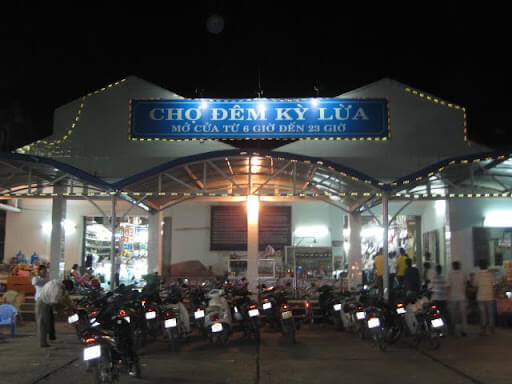
Ky Lua Night Market is open from 8 am to 10 pm, specializing in selling all kinds of goods for tourists, not only a place to exchange goods but also a meeting place to make friends with ancient cultural features. transmitted vividly. The market with a bold border identity will leave a deep impression on visitors when coming to Lang Son.
Doan Thanh (Ancient) Lang Son
Lang Son Citadel is a military architectural relic located in Chi Lang ward – Lang Son city. During feudalism, this was the political, economic, and cultural center of Lang Son. The Youth Union plays an important role in defending the country’s gateway, located in the valley of Lang Son city, surrounded by high mountains. The inner circumference of the citadel is 219 ranges 2, chains 5 spans, and outer circumference is 586 ranges 8 spans 7 spikes (according to the old measurement units). The Eastside is 153 Truong and 7-chain, the Western side is 140-staff-wide, the Southside is 273-staff, and the Northside is 292-staff. Through the ups and downs of history, Doan Thanh has been pretty much destroyed, the clear remains are that the gate and the hundreds of meters long southern wall are quite intact, the foundation is built of greenstone and the arch gate. coil. The length from the foot to the top is 5m, and 4m wide.
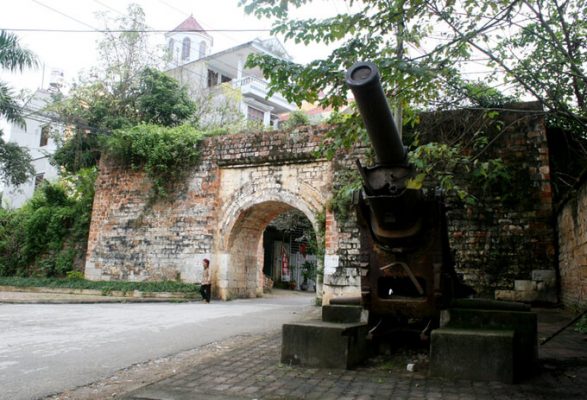
Over time, the city was almost destroyed. The remaining traces of the citadel are an ancient city gate, overgrown trees that when visitors to Lang Son, walking through the quiet streets of the administrative district will see.
Phai Ve Mountain
Phai Ve mountain archaeological relic is currently located in Vinh Trai ward, located at the center, east of Lang Son city. This is one of the archaeological relics mentioned many times with other archaeological relics in districts of Binh Gia, Bac Son, Van Quan, Chi Lang, Huu Lung, … Here, archaeologists have found paleontological traces. In 1914, the French once named the road through Phai Ve mountain the cave avenue. Currently, visitors easily see this relic when visiting, traveling, and shopping at Dong Kinh market.
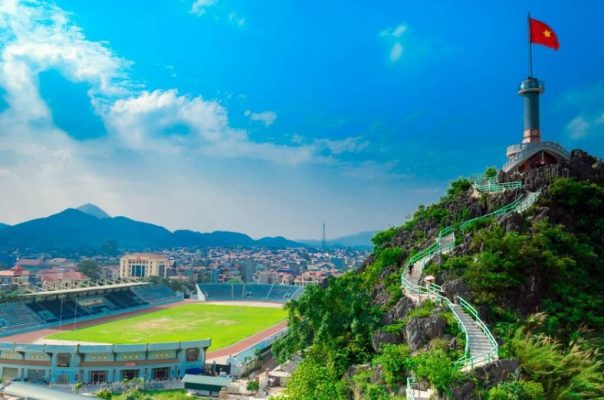
Bac Son Tourism
Na Lay Mountain
Na Lay mountain peak at an altitude of about 600m above sea level, this is the place that most Bac Son tourists come to because it is ideal for a panoramic view of the beautiful Bac Son valley from above. , especially at dusk and dawn is full of charm. With 1,200 steep rocky steps, those who are accustomed to climbing will take about 30 minutes, the rest can be struggling about 1 hour to reach the top. And then the scenery from the top of Na Lay will be a gift to erase all previous hardship and fatigue. There is also a microwave station where you can relax while hunting,…
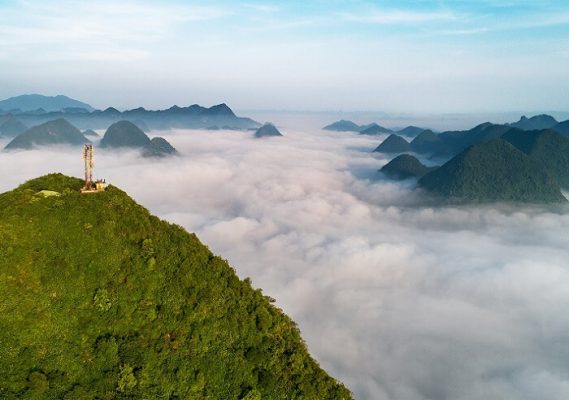
Quynh Son Cultural Tourism Village
The Community Tourism Culture Village of Quynh Son commune is located in Quynh Son commune, Bac Son district, about 2km from the district center to the north. The entire village lies neatly in the Bac Son valley with over 400 traditional stilt houses of the Tay people, facing the South with their back leaning on the mountain. The whole of Quynh Son village is like a multicolored painting with the colors of the mountains, the colors of the vast fields, the color of Quynh Son stream in the winding blue, and more is the blending of human life with beauty. of nature.
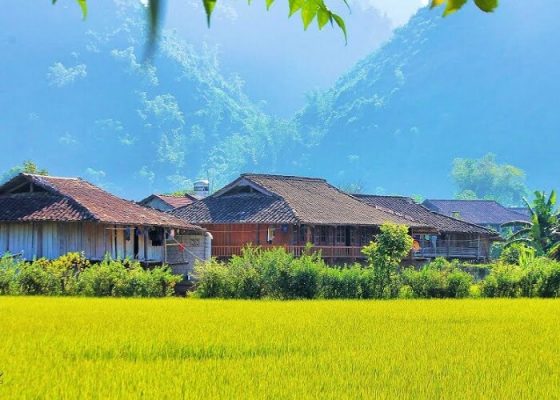
Bac Son Flower Valley
Bac Son flower valley located in Lan Khoang village, Tran Yen commune, Bac Son district (Lang Son) has become an ideal meeting place for flower lovers in the Northeast because of colorful flowers, racing each other. blooming with endless flower fields running at the foot of majestic mountains.
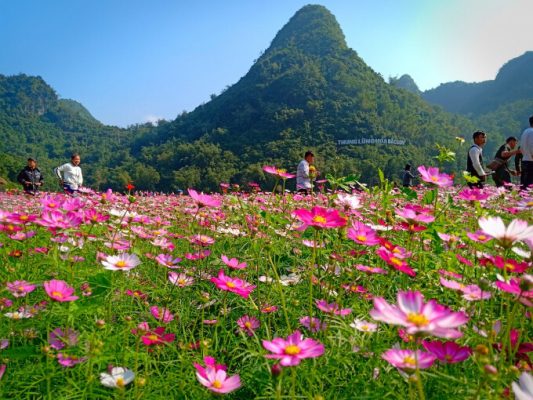
Triangular Circuit Flower Garden
Triangulum Mach was planted in Tran Yen commune, Bac Son district. The flowers bloom in October and November, attracting many visitors to visit and take photos. Flowers are grown in the valleys, surrounded by rocky mountains. To reach the flower field, visitors have to pass the roads along the banks of the ditches and corn gardens of the people.
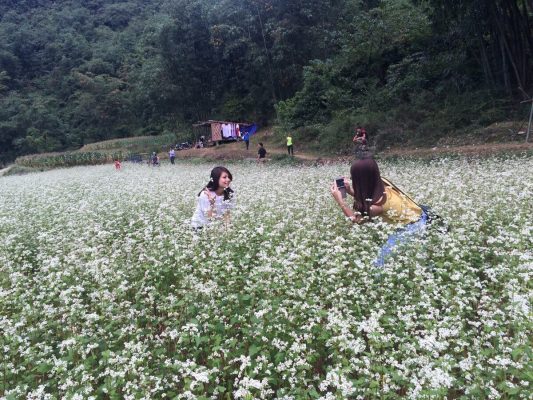
Bac Son Insurrection Museum
Bac Son Insurrection Museum is a place to keep, preserve and display systematically the documents of artifacts about the Bac Son uprising in the past. At the same time, the museum also simulates the residence of prehistoric people and displays archaeological relics excavated in Bac Son. The museum’s architecture is built in the form of a traditional Tay house on stilts, behind high mountains, four sides of open space. And currently, the museum does not collect entrance tickets.
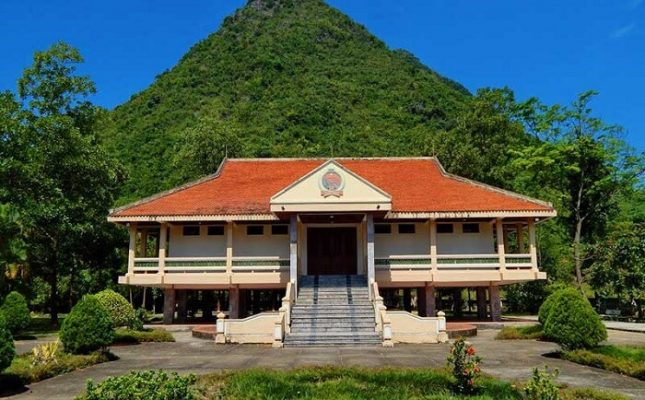
Tam Canh Pass
The Tam Canh Pass relic belongs to the Bac Son uprising relic, located in Lan Luong village (with some people reading Lan Luong) in Long Dong commune, Bac Son district. The pass is located on Highway 1B bordering the two districts of Bac Son and Binh Gia.
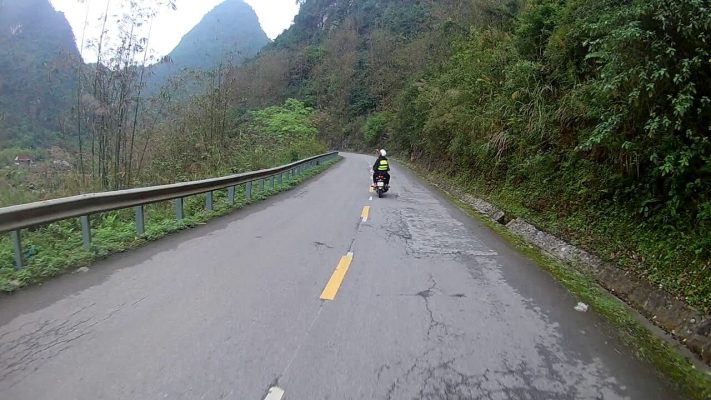
On September 23, 1945, at Co Play mountain slope area (belonging to Tam Canh Pass), the Bac Son army and people made an ambush to destroy many Japanese soldiers when they pulled into Bac Son.
Mo Mam Streamer – Hang Kenh Tao
24km from the center of Bac Son town, Mo Mam stream (Quang Trung I village, Chien Thang commune) is one of the tourist destinations attracting those who like to explore and is also a destination chosen by many families to rest. Enjoy the cool green spaces and local produce every weekend.
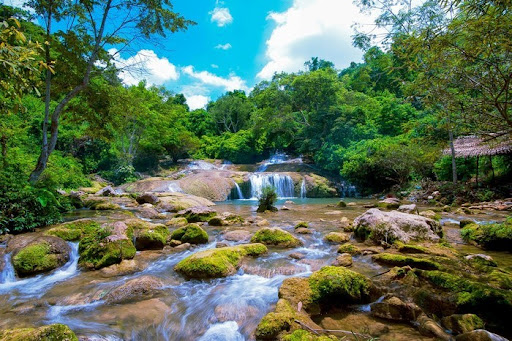
Mo Mam is originally the name of the village next to this stream. The stream is named Keng Tao, but tourists who come here like to call it Mo Mam. Coming to Mo Mam in September, we cannot help but be surprised by the poetic beauty here. The clear spring water flowing from the cliff creates a lyrical scene, the highlight is the artificial fountain between the falls, the wide streambed area, cool water, there are deep places for guests to take a cool bath.
Dinh Nong Luc
Not far from the wood-clenched forest is Nong Luc communal house in Hung Vu commune, the communal house is ranked as a national historical relic in 1962. Dinh Nong Luc is a harmonious combination of traditional architecture in the Northern Delta. The architecture of the Tày traditional stilt house in Lang Son, built in the Nguyen Dynasty (1927), was later restored based on keeping the traditional art architecture. At Nong Luc communal house on the evening of September 25, 1940, an important meeting of comrades of Bac Son continent took place to discuss the plan of insurrection to rob the government of the French colonialists at Mo Nhai post. The meeting issued a resolution to establish the uprising steering committee, unifying the time of the uprising at 20:00 on September 27, 1940.
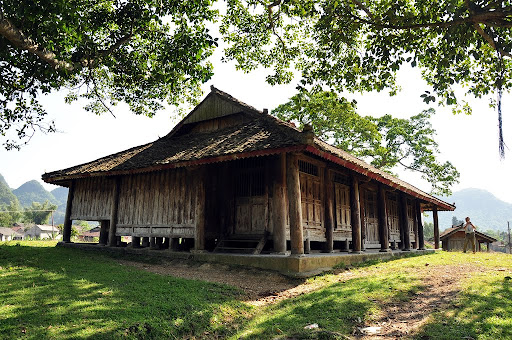
Don Mo Nhai
From Nong Luc communal house, tourists travel more than 1km to the relic of Mo Nhai station. The post is located on a high hill, with a strategic military position on the main road leading to 3 main directions: Binh Gia, Vu Lang, Bang Mac. When occupying Bac Son, the French colonialists focused on building the Mo Nhai post into a strong military base to control and prepare to crush the Bac Son guerrilla forces operating around the area. On the evening of September 27, 1940, about 600 Bac Son militias and militiamen divided into three directions simultaneously attacked Mo Nhai station with rudimentary or homemade or acquired weapons from the enemy, causing them to flee, and we seized them. lots of firearms, ammunition, and burning of documents and seals. The victory at Mo Nhai’s post was an important mark of the Bac Son uprising. It was evaluated “as the gunfire signaling for the national uprising, as the first step to fight with Indochinese national forces”. The victory proved the correctness of the transition from political struggle to the armed struggle of our Party, which strongly encouraged the later revolutionary armed struggles.
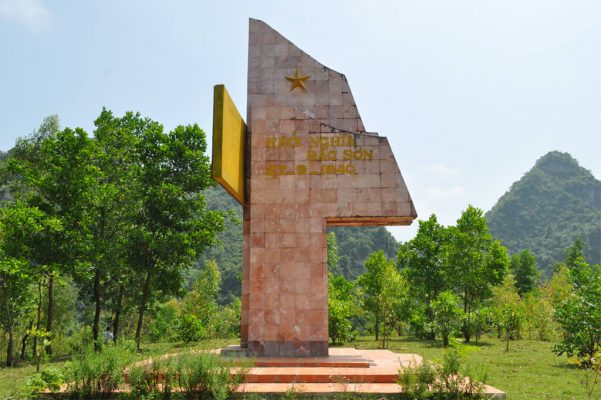
Tam Hoa Lake
If you want, you can experience the vast expanse of freshwater lakes in the region such as Vu Lang Lake, Tam Hoa Lake, rafting, recreational fishing, and enjoy dishes. real special. If you come to Bac Son during the tangerine season (October, November of lunar calendar), you can visit the specialty tangerine gardens that grow incorrectly in the unicorns and valleys, freely choose and buy as gifts.
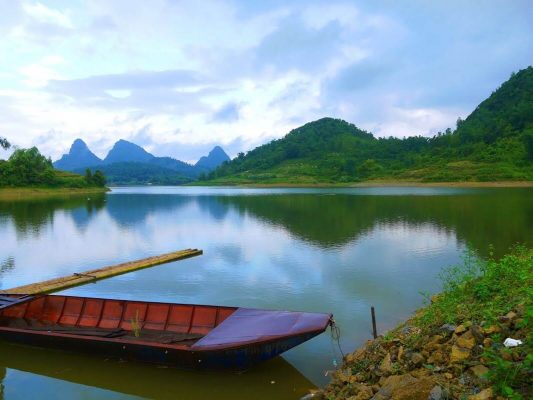
Pac Mo Lake
From the town center of Bac Son district, follow the inter-commune road about 2 km, you will reach Pac Mo lake in Huu Vinh commune. This is a ranked scenic relic at the provincial level in 2002. Not only is it an irrigation lake that provides water for production and daily life, but Pac Mo Lake also has a naturally beautiful landscape, clear blue water never exhausted, the lake surface is peaceful reflecting the glistening stilt roofs beside the canopy of ancient trees at the foot of the mountain. Right next to the lake is Bo Loong well, legend has it that in the past, this area was dry, on a heavy rainy day, a white god buffalo rammed into the cliffs of the lake, entered the mountain bed, and created this well. . Since then until now, Bo Loong well has run all year round providing water to the vast lake. The strange thing is that before each day of heavy rain, the water coming out of the well will turn white like rice water, especially cold water that does not know where it comes from, so cold that a healthy person will not be healthy at midday. can be soaked in water for up to 5 minutes.
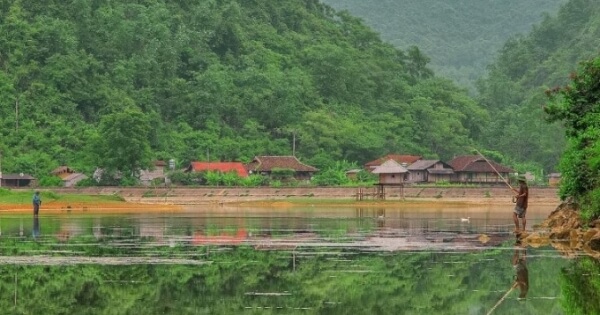
About 200 meters from Pac Mo lake is Tham Hoai cave. The cave has 2 floors, many stalactites with strange shapes, very beautiful, with limestone pillars tens of meters high standing beside the path. The cave is located halfway up the mountain, more than 700 meters long, high and wide with many colorful stalactites. After 1964, Viet Bac Autonomous Region Radio station evacuated from Dong Hy (Thai Nguyen) to Tham Hoai cave to avoid bombing to destroy the North of the US imperialism. Currently, on the first floor and outside the cave, there are still traces of the factory area and the housing area of Dai house staff is quite intact.
From Pac Mo lake, you continue to follow the inter-communal road about 7km to Tan Lap commune to explore Lan Pan and Ru Hon cave. Lan Pan Cave belongs to one of 12 points in the Safety of Bac Son area which has been ranked as a national monument. Here on June 23, 1941, the delegation of Central Party officials including comrades Truong Chinh, Hoang Quoc Viet, Hoang Van Thu, Phung Chi Kien, Tran Dang Ninh,… attended the 8th Central Conference from Pac Bo (Cao Bang). returning to stay in the cave for a while to direct the Bac Son revolutionary movement, convey the content of Central Resolution 8 on promoting the anti-Japanese-French anti-fascist movement, the national liberation struggle.
Arriving at the center of Tan Lap commune, you stop the means of transportation, prepare climbing tools to explore and conquer Rù Hon. Although the topography of Rù Hon is very dangerous, the inside of the cave is extremely majestic, with many arches over 150 meters high, seemingly endless in the heart of the rocky mountain. The system of pristine stalactites is shaped like rocks, stone drums, dragon head, fairy king, fairy pond, female palace, stalagmite,… all shapes and sizes with all kinds of colors, attractive to experience and explore.
Bong Khuon Cave
Located in Vu Le commune, this is a cave about 10km long, still intact, amazing with countless types of stalactites, and hardly known by many people.
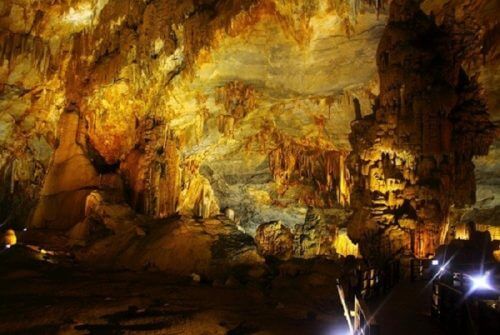
The Lantern Festival in Quynh Son commune
It Takes place on 12 and 13 January every year with a lot of rich and attractive content. After the ceremony to worship Than Hoang, there are many folk games such as plowing, swinging, swinging, tug of war, chess, pounding rice.
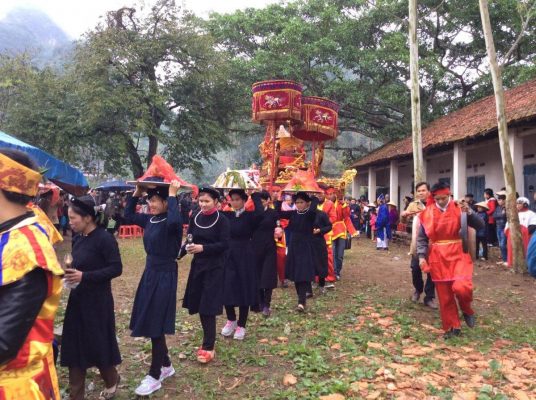
This is also an opportunity for the people of ethnic groups in the commune to preserve and promote their own cultural identities and promote the strong potentials of the community tourism destination to promote economic development. local calendar.
Dang Mo Waterfall
Dang Mo waterfall has a poetic beauty, flowing all year round between pristine mountains and forests, located in Binh Gia district, only about 20km from Bac Son town, so it is often combined in Bac Son travel. Along the waterfall are large and small rocks piled on each other, of all shapes and sizes, covered with green moss. On the shore, the old tree stumps reach out and spread out the middle of the waterfall, making this place more mysterious and highlight the white water,…
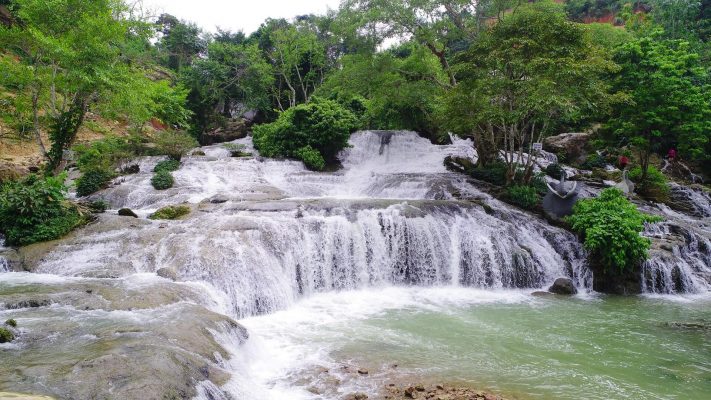
Mau Son Tourist Area
Mau Son Peak is 1,541 meters high, surrounded by a population of 80 large and small mountains with the highest peak being Phia Po (1,541 m, also known as Cong Peak or Cong Son – where landmark 42 is located. Vietnamese-Chinese world). The area of Mau Son is about 550km², located 30km northeast of Lang Son town center, 30km far from Lang Son city.
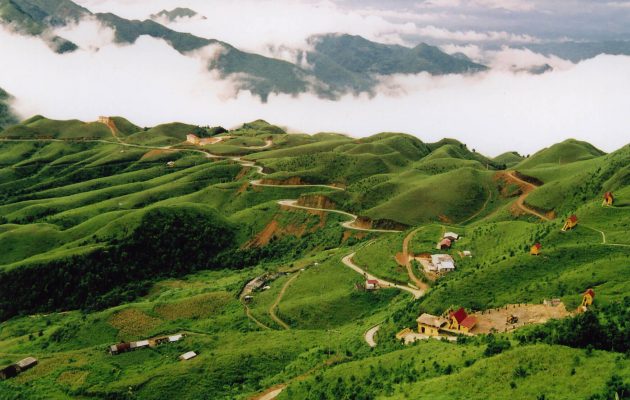
Mau Son Peak is an ideal place to relax and relax after stressful working days. The air is very fresh and natural, creating a feeling of closeness and intimacy. Along the way, you can also interact with ethnic Dao, Tay, Mong, Nung,… who are carrying vegetables or bundles of firewood on their shoulders.
In winter, there are years when the temperature in Mau Son drops to negative temperatures and there may be snow, ice. The average temperature here is 15.5 ° C. The top of the mountain is cloudy all year round. Mau Son is famous for its products such as snow mountain tea, six-stem pheasant, forest lemon, frog incense, Mau Son wine,…
Traveling to Cao Loc
Huu Nghi Quan International Border Gate
Huu Nghi International Border Gate is an international border gate of Vietnam located on the Vietnam – China border, the point connecting the Nanning – Hanoi expressway, is an important bridge in the development of economic relations between Vietnam and China. At the Huu Nghi international border gate, the Vietnamese side has planted milestone 1116 and the Chinese side has set up milestone 1117, these are large-sized landmarks, with national emblems of the two countries attached. Huu Nghi International Border Gate is located on National Highway 1A, 17 km north of Lang Son city.
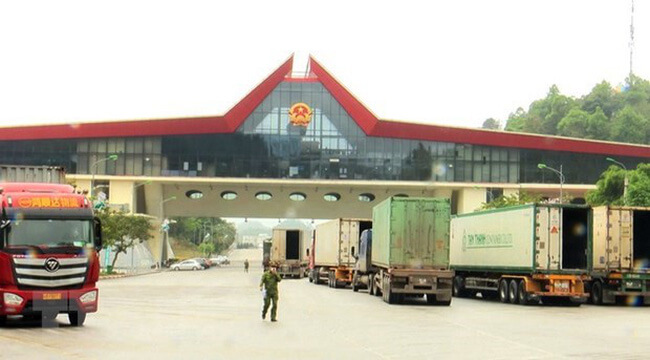
Bia Thuy Mon Dinh
Thuy Mon Dinh Beer House is a relic with many historical, cultural, and scientific values. Currently, the relic is located at the beginning of the road to Dong Dang town, Cao Loc district, Lang Son province. If calculated from the direction of Lang Son city, the relic is on the right-hand side, less than 50m from the 1A road surface. Thuy Mon Dinh stele is an ancient stele, dating back to 18th Canh Tri (1670), credited to Huu Do Thao, Nguyen Dinh Loc Cong district, with merit and career associated with the land and homeland of Xu Lang.
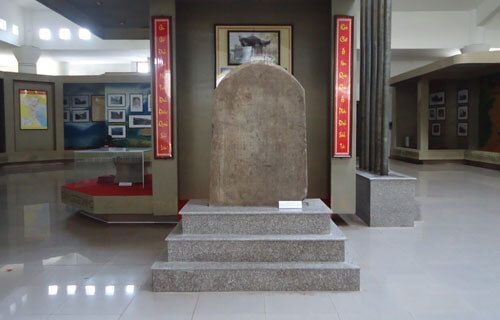
Beer is found quite dense, pedestal, higher than a person’s head. When discovered, beer was hidden in the bushes. The back of the stele has three very large letters, Thuy Mon Dinh. Thuy Mon Dinh was composed by the Governor-General and the North Vietnamese Admiral Lang Son Nguyen Dinh Loc in the year of the Perpetual Landscape under Le Trinh’s reign. At the beginning of the stele, I wrote the general idea “I thank the ancestors of goodness, so, from a young age, I have been able to follow the king to kill the enemy and be ordained to keep on the border of the relations, where the two countries have sent messengers. back and correspondence transactions. Thanks to meeting the reign of Hoang Le, the Lord’s beauty and beauty, he got the “bowl of man”, was assigned the responsibility of guarding the customs, heavy responsibility, so set up steles for the children to look after their example, to imitate and report. pay tribute to the king, water fortune”.
In the middle of the beer, there is a Ming song, which is a summary of the intentions of the beer in the form of a short verse that rhymes: “Vietnam is almost real. Tran Bac customs. Cosmic jade. Military session. Dong Dang Linh hamlet ”. Meaning: This is the gateway and pharynx of Vietnam, is the border guard that keeps the North. The cliff between heaven and earth, the deep border district. Dong Dang holy village.
The presence of two Vietnamese words in the border stele has a special significance because its location is only 2 km from Nam Quan (now Huu Nghi gate). It was erected again by the “Northern Admiral of Lang Son”, so the stele has clear administrative significance. Thus, from more than 3 centuries ago, the Vietnamese name was officially on the stele on the veranda of the customs.
Den Mau Dong Dang
Mau Dong Dang Temple (Dong Dang Linh Tu), is the place of worshiping Buddha and Mau Thuong thousand is located in Dong Dang town, Cao Loc district, Lang Son province.
In folk traditions, Mau Temple is the place where the meeting between Mau Lieu Hanh (one of the Four Immortals) and Jiang Peng (Phung Khac Khoan) took place after he returned from China. Legend has it that Lieu Hanh is the daughter of Ngoc Hoang, named Quynh Hoa, due to her predestined relationship with the world, so she often miraculously helps people, so she was ordained by the court (in the Hau Le dynasty) as Princess Lieu Hanh and appointed. to be the Supreme Blessed God. On occasions when traveling in the mountains to the landscapes of many regions, she met and painted poems with the famous artist Phung Khac Khoan, including once meeting at Dong Dang Linh Tu.
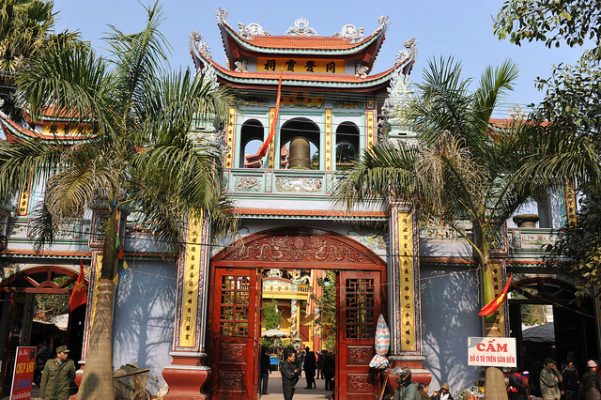
Dong Dang Linh Tu consists of 5 worshiping rooms: The innermost part is Tam Bao, the place of worshiping Buddha Chuan De and the Buddha of Quan Am; the next room outside is the Holy Mother’s Three Court, the place to worship Heavenly Mother First, the Mother of the Second Upper Thousand and the Third Mother of Comfort; the next is Son Trang worshiping hall consisting of God Thuong thousand in the middle, 2 sides are Chầu Muoi Đồng Mơ and Chầu Chin; the middle of the outermost hall is worshiping Chua Lieu, the two sides are Chầu Bo and Chầu Lục; The left space is dedicated to Chầu Quaternary Kham Sai, in addition to the mandarin Tran Trieu Duc Dai Vuong, saints, saints,…
Every year, on the 10th of January, the early spring festival of the Lang ethnic groups takes place at Mau Temple. The Dong Dang festival was formerly known as the Cage Tong festival (to the field). At the festival, there are games such as lion dance, ethnic martial arts, and sports competitions.
Ba Son Guerrilla Area
Ba Son’s guerrilla zone includes Cao Lau, Xuat Le, Cong Son, Mau Son communes, Cao Loc district, of which Xuat Le is the center of the guerrilla zone. In the resistance war against the French colonialism of the Vietnamese people, the heroic Ba Son is the praised name for the guerrilla zone where each victory is associated with the victory of the army and people of Lang Son on the digital fire path. 4, pushing the expeditionary army to defeat at the 1950 border front. An important contribution to the complete liberation of Lang Son.
Bac Nga Temple
Bac Nga Pagoda is located in Gia Cat Commune, Cao Loc District. Bac Nga pagoda has the name “Tien Nga Buddha”, also known as Tien Nga Pagoda (Tien Nga Tu). The pagoda is located on a broad hillside, with its back leaning on the mountain, facing the National Highway 4B and the winding Ky Cung River, creating the position of “Dragon adoring admiration” according to the feng-shui theory. The small old temple, lying under the overgrown foliage.
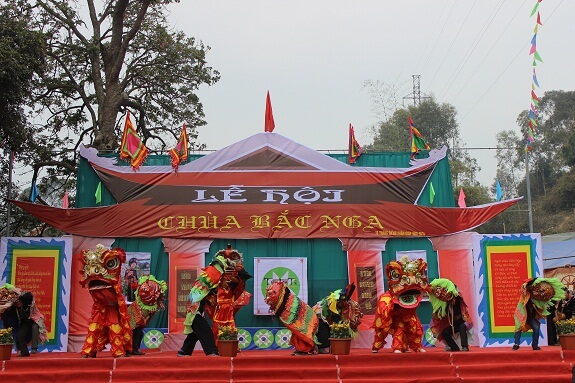
Bac Nga pagoda festival is held on January 15 every year (coinciding with Tam Thanh – Lang Son pagoda). Folk also call the Bac Nga Pagoda Association Ban Nga.
Chi Lang Tourism
Ai Chi Lang
Ai Chi Lang – a land of eminent and brilliant people on the northern border of the country. With its dangerous terrain, Chi Lang Pass is considered the wall of Thang Long citadel in stopping famous expeditions from the North.
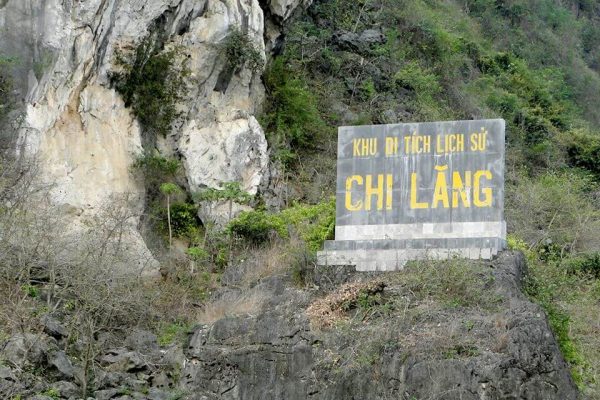
Chi Lang is a monumental and massive road running nearly 20km long, 3km wide connecting the two districts of Chi Lang and Huu Lung of Lang Son province. Ai Chi Lang is a landscape surrounded by the Kai Kinh rock range in the west and the Bao Dai mountain range in the east. The two ends have independent rocky mountains, towering to create stakes. Chi Lang’s majestic history is associated with the activities of genius military men such as Ly Thuong Kiet, Tran Quoc Tuan, and talented leaders of Lang land: Pho Ma Than Canh Phuc, The Loc, Hoang Dai Hue …
Against the distant history, the people who lived in Chi Lang were traces of Bac Son – Mai Pha culture famous for beautiful caves like in the legend and stone axes, ceramic fragments … the prehistoric and prehistoric period of the people living in our country.
In the years before and after AD, Chi Lang Pass was associated with the nation’s cause of building and defending the nation, fighting against Chinese feudal dynasties. In the 14th century, the Tran prime minister, Pham Su Manh, when riding a horse across the border, decried an immortal verse: “Chi Lang rests heavily against the sky”.
In 1077, the father of Lieutenant Ly Thuong Kiet went back to Chi Lang to travel to Chi Lang to meet the fathers of Than Canh Phuc to discuss the army. With the battle lines Quyet Ly and Giap Khau (Chi Lang), Than Canh Phuc and the people of Lang contributed to defeat the Song invaders for the second time.
In the 13th century, the whole world was horrified by the hooves of the Nguyen Mong empire. However, in 1284, when the Nguyen army passed through Chi Lang’s crossroads, our army forcefully intercepted and attacked General Nguyen, Nghe Nhuan, who was killed on the spot. Hung Dao Dai Vuong Tran Quoc Tuan himself showed his military genius here: with a horse trap hole, from the pit we used a horse to break the horse’s leg, separating the friendly Nguyen Mong from the horses. destroy them …
In the 15th century, Chi Lang pass recorded a brilliant page in Vietnamese history, which was the 1427 victory, killing Marshal An Vien Lieu Thang – the head of the enemy and 10,000 Minh troops, contributing to the decision to conclude to successfully promote the resistance war against the Ming army and liberate the country. In the 18th century, under Emperor Quang Trung – a genius military man, Chi Lang once again and the nation’s army and people defeated the Qing invaders … In the 19th and 20th centuries, Chi Lang border again witnessed our militia’s victories against the French and expelled Japan.
Devil Face Mountain
Devil face-shaped mountain is located in Quan Thanh village (Chi Lang commune, Chi Lang district, Lang Son). That is why this place was formerly called the Demon Gate Quan, which means the door of the devil. This mountain has a special feature in the middle of the green space of trees, revealing a shape very similar to the face of a giant monster. From a distance, this face is full of eyes and nose.
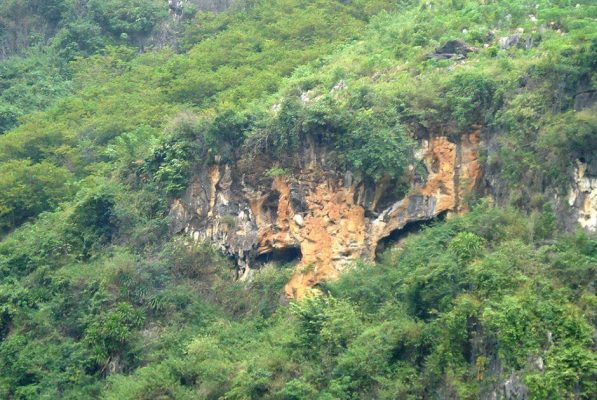
Interestingly, even though it is considered a demon face, the people here do not see it as a symbol of evil, but rather, the people think that “the demon face will protect the peaceful life of the villagers”.
Wind Cave
Hang Gio also has names: Gio Thong Cave or Mai Sao Phong Cave. Hang Gio relic is located in Lung Khom (Sao Thuong B village), Mai Sao commune, Chi Lang district. Hang Gio’s scenic relic area covers a large area, with many natural rocky mountains and caves belonging to the Bo Nhan mountain range from Sao Thuong village to the center of Mai Sao commune. The most prominent cave is Gio cave. This is a large-scale cave, hundreds of meters in length, 50 – 70 meters wide, and up to 30-40 meters high in some places. The cave has 2 floors and a basement, a few extra nooks and crannies, easy access in the cave. The floor of the cave is relatively flat, the arch of the cave is high, wide, and airy, bringing the shape of the dome of the church. The cave wall has many stalactites with strange shapes.
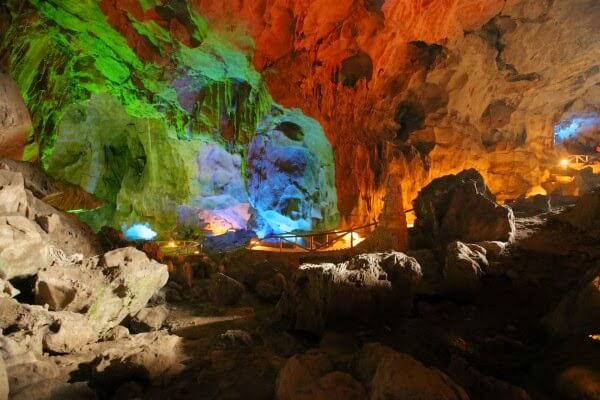
To visit the scenic area of Gio cave, you must first visit the Gio Cave (Thong Gio Cave) step up to 392 long chi-shaped steps to reach the Gio Cave, then visit the surrounding caves such as Hang Cong Chua (ie cave Theater), Hoang Tu cave (ie Sang cave), Thien Dinh cave, Doi cave, Thuy Tien cave (ie Nuoc cave).
Lang Nac Cave
Lang Nac cave is also known as Mouth Ho cave or Treo cave (the name of the local people). Lang Nac cave is located in the limestone mountains of Mai Sao commune, Chi Lang district, Lang Son. The cave is right next to kilometer 32 National Highway 1A (old), 5km northeast of Dong Mo Town, 400m south of Mai Sao Commune People’s Committee. The way to the foot of the mountain is convenient, can be used by car. But to climb to the cave entrance requires a little more health and patience for the climber.
Lang Nac Cave is at an altitude of about 100 meters above the valley surface. The mouth of the cave is 18m wide, 16m high, facing the East, the South is about 200, very cool and dry. The depth of the cave is 17m, the surface of the cave is flat, about 70m2 wide. At the foot of Lang Nac, cave mountain is the Mai Sao stream, which is the source of the Thuong River. Lang Nac cave is located in a quite diverse ecosystem: rocky mountains, earthy mountains, hills, valleys, rivers, streams, … Therefore, Lang Nac cave is very convenient for the living and livelihood of primitive people.
Trang Dinh Tourism
Pac Lung – Ky Lang relic
Pac Lung, Ky Lang is a place in Na Han village, Tri Phuong commune, Trang Dinh district. Here on April 11, 1938, the first Communist Party Branch of Trang Dinh was established under the leadership of comrade Hoang Van Thu.
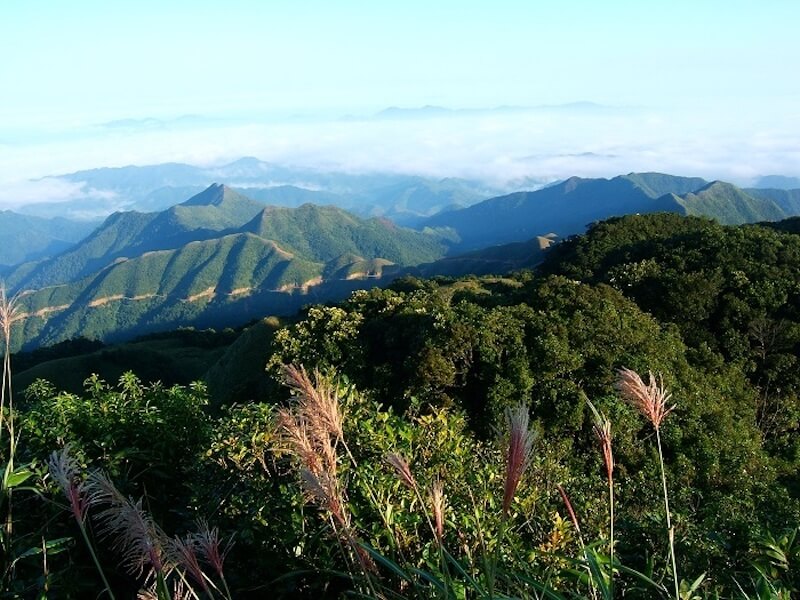
Hang Coc Muoi
Hang Coc Muoi in Na Han village, Tri Phuong commune, Trang Dinh is the document printing facility and secret operation site of the Phi My branch in the years before the August revolution. After the establishment (April 1938) and inauguration, Phi My branch office set up a Print base at Coc Ten cave, led by comrade Quoc Binh (Giao Loi). All documents, newspapers, leaflets, and documents of activities of the African-American branch came from this establishment.
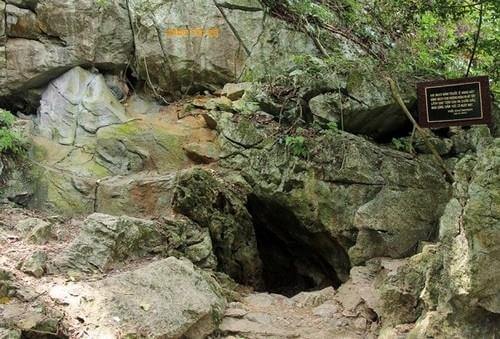
Don Ma
Today, the remains of Po Ma fortress in Quoc Khanh commune, Trang Dinh are outside the baseboards and foundation traces, the foundations are made of rough stone. In 1934 – 1935, to actively cope with the Trang Dinh revolutionary movement, and at the same time prevent the influence of the world revolution on Vietnam, the French colonialists urgently built a dense network of outposts throughout the country. border area. Don Ma was built during this period.
Huu Lien Community Ecotourism Area
As the connection point between the two districts Huu Lung – Bac Son with the quite complete inter-district traffic route, in addition to the biodiversity of the national nature reserve, coming to Huu Lien commune you will discover the type. ecotourism and natural landscape tourism.
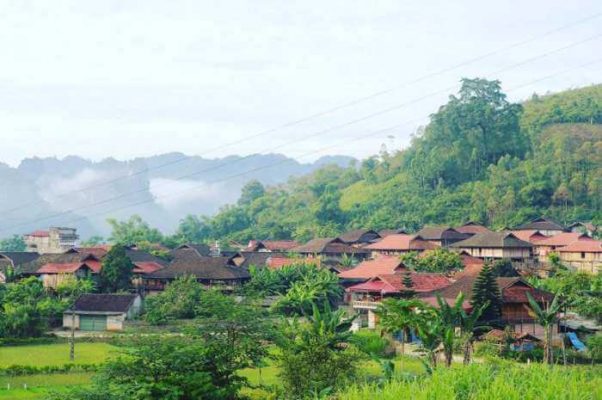
Not only diverse in habitats with rare special-use forests, majestic rocky caves, and waterfalls, Huu Lien is also an eco-tourism destination, an attractive community with many historical values. culture, festivals, and folk games. Walking around Huu Lien commune, prominent among the flat wet rice valleys are the spacious and airy stilted houses lying in the middle of the clouds and mountains of the old forest like a water-color painting that captivates the hearts of people.
Bac Le Temple
Bac Le Temple located in Huu Lung district is a relic complex located on a hill in the southern part of Bac Le Street. Currently, it is not yet determined the exact time of birth of a temple, but based on two epitaphs (1919 and 1933), the Bac Le temple from the beginning of the twentieth century has undergone 5 remodeling times. According to the epitaph inscribed in the 4th Khai Dinh year (1919), before that the temple was just a small shrine, often caught on fire, then people built a 3-room house with 3 palaces: First – Second – Third (forbidden palace), the temple carries the silhouette of Chinese sculpture architecture. During the second repair (1933) and 3rd (1940), the old 3-room house was returned and the Third Palace was built behind. A tall gate was built outside the Three Levels to the temple. After that, due to other conditions and reasons, the Bac Le temple has undergone several repairs.
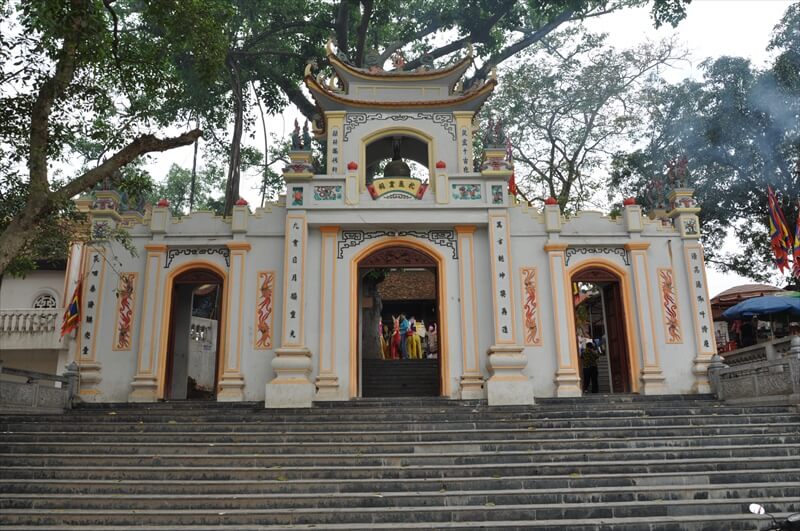
Although undergoing many renovations, the present temples still retain their traditional look, in addition to the main temple, there are also several other shrine rooms, on the front side of the temple is a small pavilion of about 10m². Worshiping Chầu Be Bắc Lệ, the front left northeast of the front face of the temple has an outdoor Ngu Ho altar. The main temple is still located in the old location, it is a row of 3 rooms built of brick roofed with western tiles, wooden columns, these three rooms are simultaneously 3 arcs, an area of 126m².
Although many were lost, the temple still retains some ancient relics and more new artifacts are provided. At present, the temple has 19 large and small statues mainly made of wood material, many colorful subjects hanging on the aisles with two epitaphs, and many anti-parallel panels.
Just like any Mother temple at Bac Le temple in the Dong Dong, Tu Phu dynasty, worship all the gods in the four regions of the Universe, but here especially the gods associated with the locality such as Mau Thuong Ngan, Chau Be, Little Girl … the gods provide boundless wealth in the mountains and forests for people, and become symbols of eternal life. Chầu Bé is according to the concept of the people here, who are real people from Bac Le. Here Chầu Bé can act on behalf of Mau to implement her creative ideas.
Besides the Center is Mau, there are also deities incarnating of Mothers such as Five Virtues of Ton Ong, Four Palaces of Chau Ba, Four Palaces of Quan Hoan, Co, Uncle .. are shown through the post of relics. The main festival of Bac Le Temple is held on September 20th of the lunar year every year. The ceremony and procession of books were organized very generously, attracting a large number of people to attend.
Delicious food in Lang Son
Coming to Lang Son land, visitors not only can admire the majestic scenery, relax with rivers and mountains, but also enjoy specialties with bold human flavors in the Northeastern mountainous area.
The famous specialties of Lang are Roasted That Khe Duck, Roasted Duck Noodle, Roasted Pig with Honey, Mau Son Wine, Egg Roll, Khau … you can read more about delicious dishes in Lang Son for more information and the address to enjoy those dishes in Lang Son.
Roasted Duck Pho
Roasted duck is like That Khe duck. After being cleaned, the duck will be impregnated with spices, onions, peppercorns, and berries, stuffed inside and sewn. The outside of the skin is soaked with honey and left for about 10 minutes, then the duck is roasted on a charcoal stove, type charcoal for about 15 minutes, when the roast is finished, dip it into a pan of fat, turn around for 15 minutes to let the rack cool. When roasting a duck requires no black burning technique, to ensure heat, as long as the meat is fragrant, delicious, duck meat must be saturated with honey color, have a strong flavor, which is the delicious duck meat.
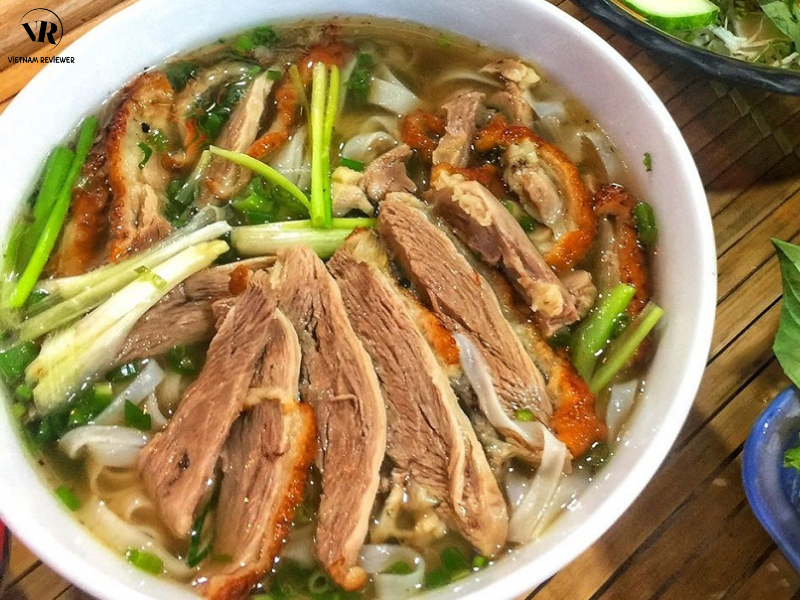
When the duck is roasted, the fat water will be used to fill the duck noodle soup. When enjoying a bowl of duck noodle soup, add a few slices of sour bamboo shoots soaked in the ready-made jar, the aroma of duck meat, the salty broth, and the sour taste of bamboo shoots create an appealing border for specialties.
Lang Son Sour Pho
These Lang specialties are processed quite sophisticatedly and have a very attractive taste. Lang Son sour pho must eat it properly to fully enjoy its special flavor. Currently, sour pho is sold in some northern mountainous areas, but only the products of That Khe and Lang Son are more famous.
Sour pho consists of two parts: dry ingredients and water. The dry part is, first of all, the noodle cake. It is still a familiar noodle cake, but the other thing here is that it is astringent so that it is both supple and supple. Next is the sliced potato dish and the gasket applied over the fat so that it is crispy and golden. The pork liver is thinly sliced by half of the fried palm edge. The pork belly is delicious and the pork stomach is roasted in a pan of fat. As for the roasted duck, you should choose to buy at famous professional restaurants in That Khe. The noodle soup includes garlic, vinegar, sugar, pasta,…
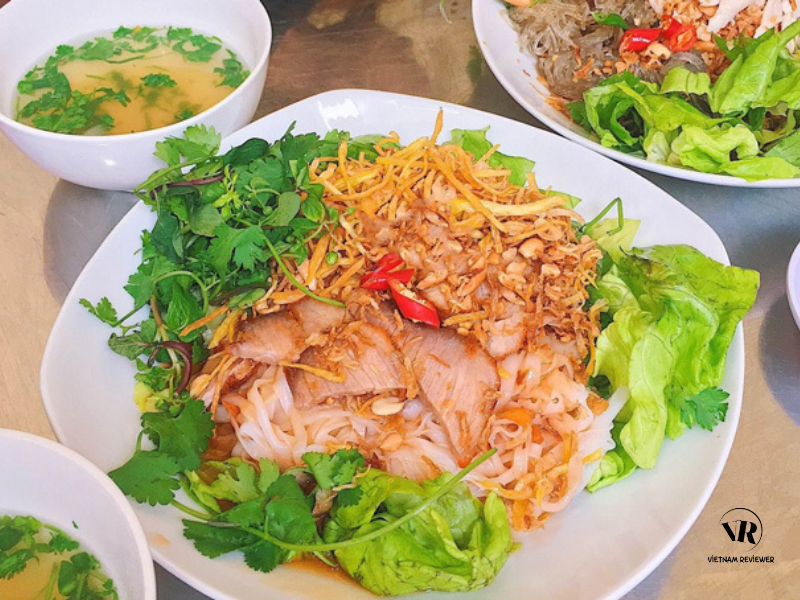
It is this mixed water that makes the eater not feel sick. And the broth is the water that is drawn from the roast duck’s belly.
All ingredients are prepared in advance and wait until the customer calls before mixing. Mixing is the last stage that determines the success of sour pho. Mix enough water so that the ingredients are not crushed and the spices are still absorbed.
Makeup for sour pho includes pounded peanuts, herbs, dried onions, cucumbers, and sliced sausage. There is also a special seasoning that the locals are accustomed to calling Xàng (or so-called sausage), which is a dish that is intended to be eaten. Sweeping, slipping can be as big as the wrist, the ingredients, the taste is completely natural, mainly from the forest such as honey, cocoons, cloves … very attractive, healthy, is a special dish. real) gives a very strange taste. Pho Chua is a real Korean dish, so it is most popular in the fall and summer. Pho Chua is considered a proud specialty of the Lang Son, so it is an indispensable dish in the occasion of welcoming you to your home.
Lang Son Egg Rolls
Not many people know it as Hai Phong or Thanh Tri rolls, but Lang Son egg rolls are always the first choice in breakfast for dinner when visiting the peaceful Lang country.
The way of making egg rolls is not much different from other types of rice rolls in many localities across the country, only the inner cake. The egg roll cake also chooses the smooth ground white rice seeds to make the dough. Then, this fragrant field starch is mixed with water into a mixture that is neither too dense nor too thin like that, which will retain the characteristic viscosity of rice flour.
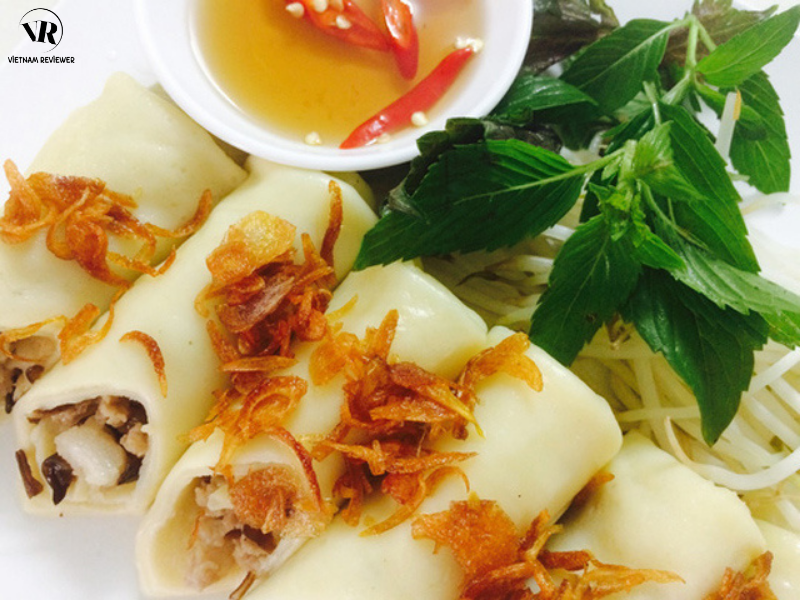
By the time the stove’s pink flames rise, the baker skillfully stretches a thin cloth over the top of the steamer and dabs a thin layer of fat on the cloth so that the rolled cake can be easily removed when it’s done. The cake is only made when a customer comes in to eat, the chef’s gentle hands scoop every spoon of flour evenly, very thinly on the fabric mold. When the cake on the pot has just cooked, take the lid off and hit the sides of the cake with two eggs, cover a little bit, wait for the white layer to turn cloudy, stick to the surface of the cake and the yolk is only. need to be ripe enough that the heart is trained to form a thin coating to prevent the egg from breaking.
When the cake is cooked, the baker uses a flat bamboo chopstick to divide the leaves into two parts, using the remaining corners of the cake to cover half of the chicken egg, not cover it. Thus, the egg roll cake has been completed, just exposing a plate sprinkled with a layer of lean meat, crushed into small strands that look delicious. The cakes have just been steamed, freshly rolled, the smoke is still suspicious and must be eaten immediately to feel all the deliciousness of the egg rolls.
Sitting around the charcoal stove, listening to the wood-burning and exploding, sipping a bowl of hot water, enjoying egg rolls with simple dipping sauce, a cup of braised gravy, and a thick layer of fat with some raw vegetables. Lang land is so peaceful. The more interesting thing is that when eating the cake, the user has to cleverly put the cake into his mouth so that the egg yolks break in the mouth mixed with the fatty, sweet-salty taste of the braised gravy to see all the delicacy and moisture in the reality of this countryside.
Khâu Nhục
Khâu Nhục, also known as a Lying stitch, is a dish originating in China. Kham was introduced into Vietnam through the Tay and Nung ethnic variations, and over time has become a famous specialty dish of Lang Son, used in family occasions like Tet or getting married,… Traditionally, the stage of humiliation is processed quite sophisticatedly from bacon only after it has been thoroughly marinated with spices and water-proofed for a long time.
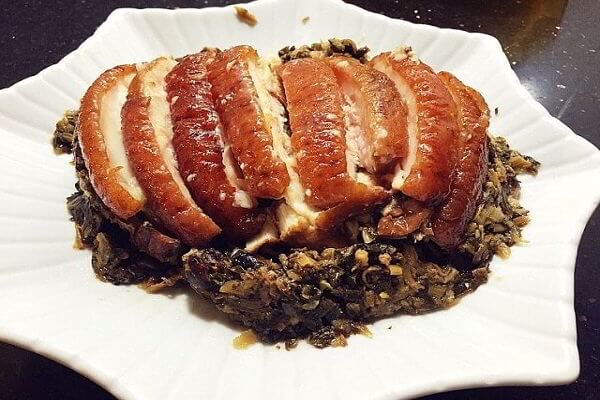
Disgrace was brought to Vietnam by Nung people who migrated from China. The name “suture” comes from the Chinese transliteration: “Khau” means “steamed to softness”, and “humiliation” means “meat”, so if translated correctly, it can be understood as “Meat is. steamed down “-Or steamed until ripe. The Chinese consider the stitching of humiliation as a rustic dish but it has a great spiritual significance, the way the piece of meat is decorated on the plate in the shape of a small, rising hill showing the will and growth in the future. Therefore, this is an almost indispensable dish in important holidays of the Tay-Nung ethnic community.
The main ingredient used is bacon. According to experienced people, the best meat should not be too fat, otherwise, it will affect the quality of the dish. Besides, there should also be spices such as basil, five flavors, instant noodles, honey, wine, vinegar, soy sauce,… The bacon is only seasoned after being boiled, then used a bamboo toothpick to poke. Carefully the dermis so that the skin can absorb water to soften, and at the same time, remove the fat layer under the skin. Then bring the meat to roast, just roast and spread the honey to the golden skin, or you can also put the meat in the pan of fat to turn yellow meat and then take it out to cool.
Taro slices, fried in gold and then put on a plate Underneath the layer of potatoes is a layer of salty salted vegetables made from chopped Chinese leaves, mixed with soy sauce, soy sauce, basil, and garlic. Then cut the meat into pieces about 1.5 cm, Put the big bowl up, turn it over to leave the plate, and place each bowl in a water bath for 4-5 hours until the meat is cooked and tender. When eating, turn the bowl of meat upside down on a plate, so that the skin of the meat is displayed on top. If there is a yellow color and a characteristic aroma, it is satisfactory. Humiliation can be eaten with rice or sticky rice, but it is best eaten with nodding cakes.
Cao Sang Cake
The main ingredient to make Cao Sang cake is ordinary rice. Rice should be delicious, white, and fragrant, cook it fragrant and make cakes delicious and smooth.
- Cake flour: The rice is soaked overnight so that it is succulent, cleaned, and then crushed in a stone mill to make a paste of water. Take out a portion of the flour and add water to make it thin, then bring to a boil, stir until the dough is nearly cooked. This flour is mixed with the other raw flour to become raw, unfinished, thick flour. Must be prepared for half-baked dough so that when steamed, the cake will not be crushed. Add a little salt, the main noodles to taste, and you’re done with the dough.
- Cake: The tall cake is made with minced pork and dried onions. Minced pork shoulder, marinated with spices to taste. Chopped onions, put in a pan and fry, then stir-fry the meat to hunt.
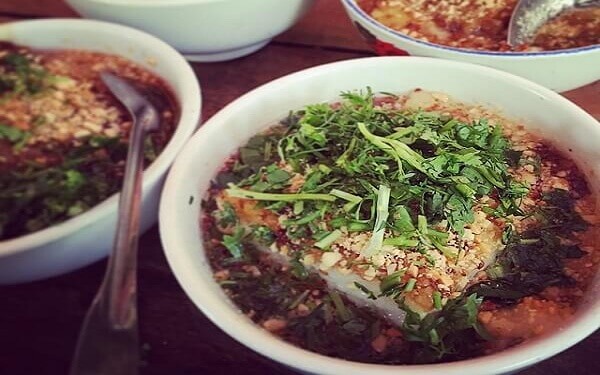
After the dough and filling are finished, the cake will be steamed. The cake is quite fussy steamed and has to be divided three times. The cake mold is a deep aluminum tray, as big as a small tray. Pour a thick layer of flour the size of a finger into the mold and steam it. After the dough is cooked, add another layer of flour and continue steaming until it is cooked. Then add a third layer of dough, which is thinner than the previous two layers and mixed with sake and soy sauce and little chopped scallions, and steamed until cooked. The cake must be steamed several times because if left in a thick layer, the cake will cook unevenly and not be chewy. When the cake is cooked, it radiates the aroma of rice flour mixed with the very attractive scent of onion. Using a sharp knife, cut the cake into a rectangle about the size of a matchbox, then sprinkle with little roasted peanuts.
Many other types of steamed cakes are often served with sauces or sauces, the tall cake is often served with,… broth. The broth is made by stewing the bones of pork, especially the bone of the tube, removing all foam, then adding the scent of flowers and chopped Chinese.
Banh Ap Chao
The dishes originating from China when imported to Vietnam, combined with the taste of the Vietnamese people have become a special gift of Lang. The sausage is made from duck meat only but it is made quite nicely. The same is duck meat but divided into two types on two plates, one plate is duck meat oil marinated with basil, the other is duck meat coated with golden fried glutinous flour. Looking at the golden brown duck meat plate next to the green, green vegetable dish, I have not eaten yet, but I have already seen it delicious. Duck with oil is used with a bowl of seasoning, chili, vinegar-soaked with bitter bamboo shoots, and honey. The taste of duck meat is seasoned carefully, but it has the sour taste of its very own dipping sauce. And the duck meat coated with glutinous rice flour – the glutinous rice powder that salty donuts still use to make cakes – is dipped with papaya fish sauce mixed with chili vinegar. Bite one piece to see the plasticity of the glutinous rice flour, and on the second bite, you can immediately feel the sweetness of the golden duck meat. Eat forever without getting bored. Both are served with raw vegetables. In the cool breeze of the highlands, gather with friends, sip Mau Son wine, sip the rich taste of the sauté dish, rub the spicy taste of ginger, chili to feel all the excitement Lang cuisine.
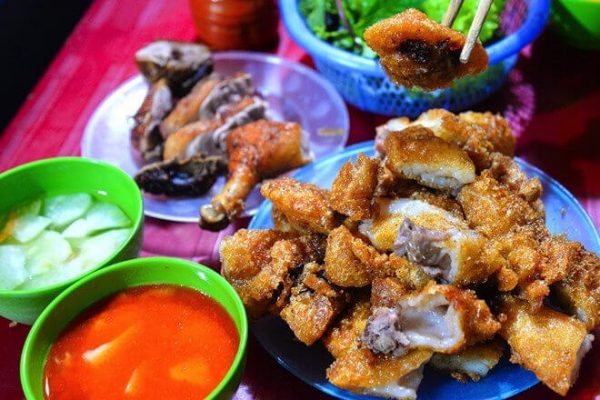
Lang Son Roast Pig
This is an indispensable specialty dish in the tables in Lang Son and is not only delicious but also sophisticatedly processed and has its flavor of Lang.
To make roast pigs, people choose the ones that range from 20 to 35 kg slightly, if they are too big, they will be fat, and they will eat more fat. Small under 20kg is not meaty, sticky, and has no flavor. Lang Son people tend to breed female hoof pigs (our pigs are also known as ” pigs ”) with small bones, firm meat and a lot of lean meat so roast meat is delicious; If you can choose this breed to roast, it will be even more delicious. The whole pork is shaved from the pig’s head to the feet of the pork belly, shaved white, but the pigskin is not torn, so that when roasting, the skin of the pig will not be broken, causing loss of sweet water and the aroma of the meat. Pigs clean their feathers, take out all internal organs to soak in spices. Take salt and pepper and rub evenly in the belly of the pig to allow enough infiltration, then take the molasses leaves (a fruit that can be eaten and can be seasoned), and wash the stalks and leaves to drain the stalks and leaves and put them into the abdomen pig. Use a wooden skewer or a conical tree to slant the pig’s tail to the mouth, then tie the tree and the back of the pig with a string, tie the pig’s belly. For the roast pig to have delicious dark yellow skin, honey is mixed with vinegar to apply thoroughly to the whole pig’s body. Then bring the pig to roast on the burning charcoal pile, pay attention to turn it evenly so that the pig has no place to live, where to ripen.
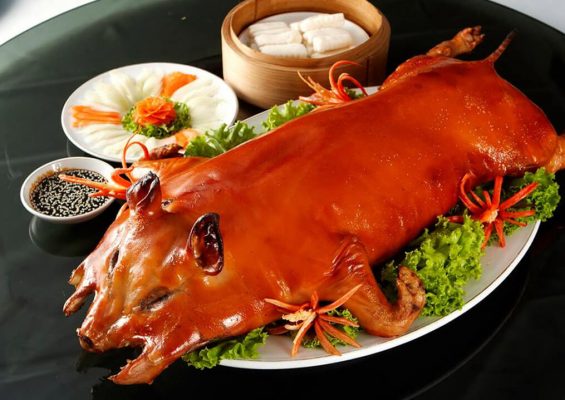
Turning a 30kg pig slightly takes 2-3 hours while roasting the pig while smearing honey and vinegar on the pig and poking oil into the pig’s skin with a sharp stick so that the skin does not crack while roasting. When the pig is ripe, water is wiped through the pig’s body with a cloth and then fan the fire vigorously to make the pig’s skin swell. Leave the pork for about 1 hour to reduce the heat and allow the meat to be cut into a plate that is not crushed. The plate of roast pork is fragrant and delicious and is delicious to saliva. Biting the roast meat has the sweet taste of cooked meat, the aroma of the leafy honey, the greasy taste of the grilled meat, the richly marinated meat, eating once will be remembered forever.
Bac Son Black Banh Chung
Black Banh Chung (also known as Banh Chung) is wrapped in a long cylinder-like Banh tet in the South or Hunchback of the Giay people. However, the typical cake of the Tay in Bac Son district (Lang Son) has a very fancy glossy black color, tightly blending into each grain of firm sticky rice and makes many people curious.
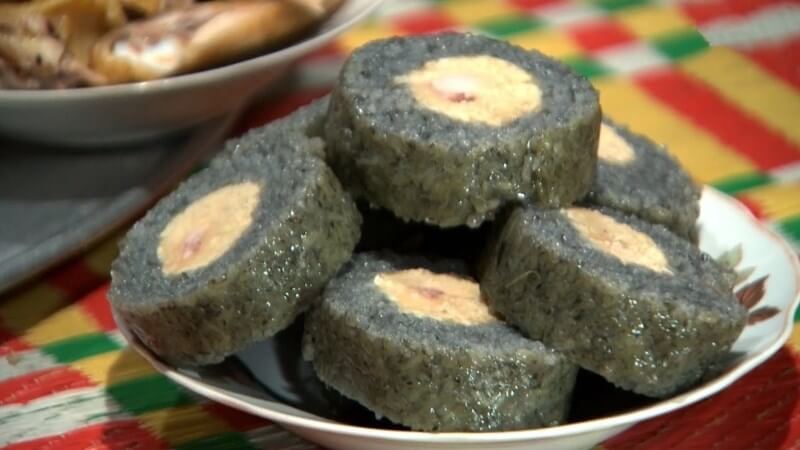
Black Banh Chung must be wrapped manually. The cake is about 30cm long, 6 – 7cm in diameter, and wrapped tightly with a long strip. Before boiling the cake, people bring it to soak in cold water once, put it in a pot to cover the leaves, cook for 4-5 hours, then take it out.
When enjoying, people take the filament wrapped around the cake body to cut into slices. From the outside, the cake is sticky and has a bean-colored golden color. Just looking, the diners are also ecstatic enough and feel like being fascinated by the highland specialty.
Sticky Rice
Lang land mint leaves are purple thanks to the broth of the leaves called Cam leaves, which are most blooming in April and May. After boiling, the leaves will be soaked with sticky rice overnight. After soaking, the pure white sticky rice seeds will turn purple, which many people joke about because they have been attached to “purple medicine”. The color of the sticky rice is also the color of the sticky rice after it has been soaked.
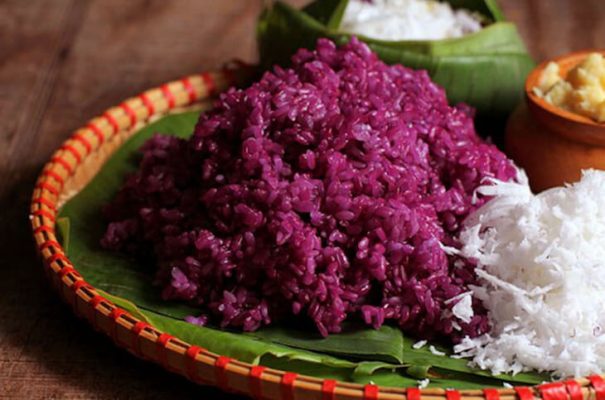
Sticky rice is as simple as sticky rice, like sticky rice and beans. When you cook, to add a rich taste you can add a little white salt, mix well, or scrape a little more copra mixed into the glutinous to have a fatty taste. If you want, you can also use the peeled green beans and the sticky rice to create the green and purple color on the plate. The scent that arises when the sticky rice is also very special compared to the aroma of other types of sticky rice, probably because the scent of the mint leaves penetrates the sticky rice.
Bac Son Bamboo Rice
Referring to lam rice, people often remember famous lands such as Hoa Binh, Son La, Cao Bang … but if once in Bac Son, Lang Son can enjoy the rice dish of the Tay ethnic people here. surely you will not be able to forget its rich flavor.
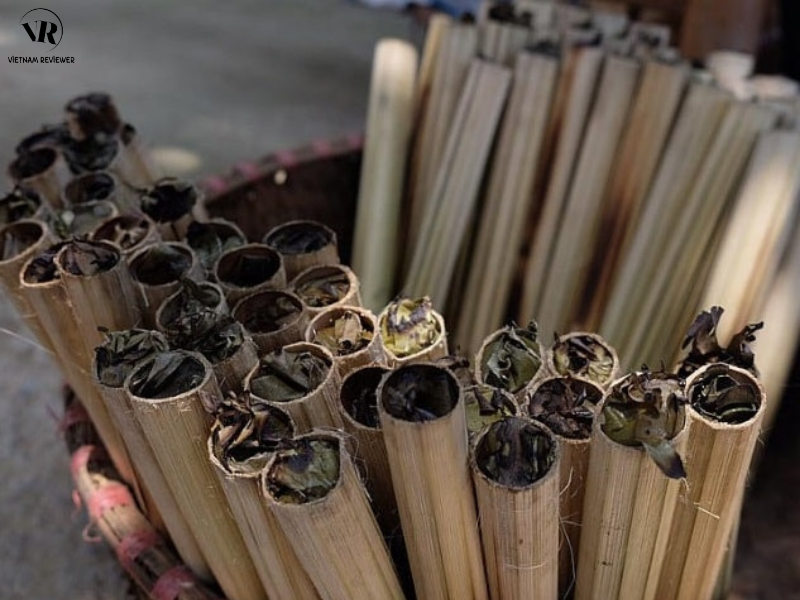
The Tay’s way of making lam rice is similar to making lam rice in other places, ie adding rice and water to a bamboo tube and then baking. But the Tay people in Lang Son have their secret to making lam rice. Their Lam rice has a unique taste. It is the sticky smell of sticky rice mixed with the fatty smell of peanuts and the strong aroma of honey leaves. What makes the distinctive flavor different from lam rice in other places is that they mix peanuts with sticky rice and then compress it into a bamboo tube. After compressing the rice and adding water to it, they took the bile leaves and plugged the tube. The knotting of rice with honey leaves both creates a unique aroma and prevents water from entering the tube, making the rice pale.
Banh Ngai
With wormwood cake, people in the Northern mountainous areas often boil young wormwood leaves with clean ash water, then wash them, remove fibers, and put them in a mortar to grind them. The cooked rice is also pounded evenly in a mortar with the crushed wormwood leaves before. Just pounding it from the hot sticky rice until it turns into a soft, smooth, and flexible dough, then you switch to catching the cake. Another way to treat leaves is to boil clear lime water to keep the green color, then turn to drain, finally, the leaves are crushed with sticky rice until it becomes a fine powder.
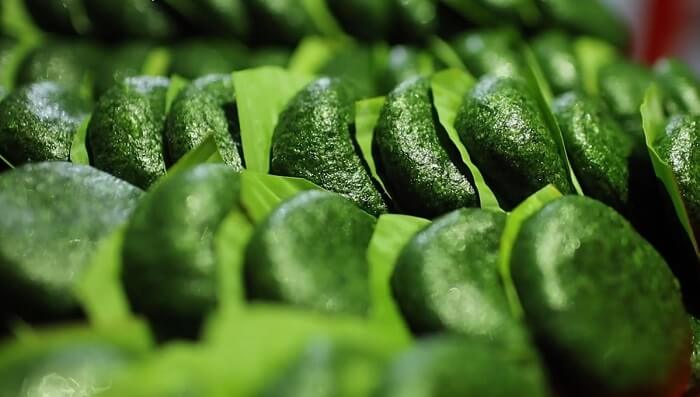
There are also places where people puree the leaves and mix them with rice, make green sticky rice, then pound it smoothly. When the dough is smooth, the cake is filled with sesame seeds with finely crushed sugar. The ratio of cake filling is not much if compared with thick cakes with sweet beans under them. In return, the smell of sesame seeds is very mixed with the scent of wormwood leaves that are now only fragrant but no longer bitter.
Lang Son is considered the “capital” of worm cake. Coming to this land, in addition to buying roasted duck meat, humiliated bowls, tourists often buy wormwood cakes to bring back as gifts.
Lang Son Chili Bamboo
The same is the chili, the bamboo shoots, but each region has a different way of processing and eating. In this region, it is just seasoning, but in other regions, it is the main dish “bringing rice”. If anyone has ever been to Lang Son, they will not be able to “ignore” a specialty of this region, which is chili-soaked bamboo shoots with fresh honey.
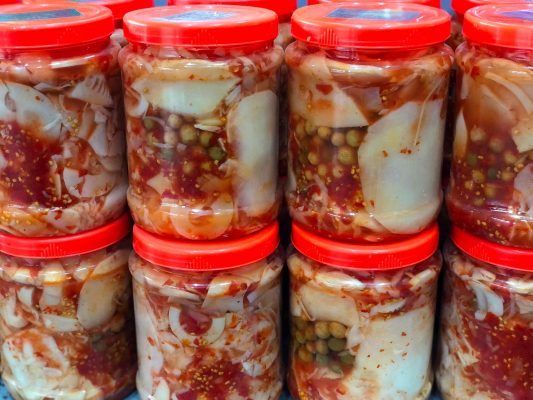
Lang Son people consider chili and pickled bamboo shoots as a familiar dish that can be eaten with rice, pho, or any other dish every day. Usually, around June and July, honey is caught in the main season, at that time bamboo shoots in the forest are at their best after the early summer rains. People will choose the type of bamboo shoots or bamboo shoots full of round, sliced. Sprinkle with medium-cooked honey and small chili fruit. All soaked with vinegar, creating a special flavor unique to this country.
Cải Ngồng Lang Son
Cabbage is a kind of young stalk of the plant, has yellow flowers, grows tall, and is often very bitter if eaten. Lang Son gong is just an ordinary choy sum, but it is not known because of the fertility of the land or by the skillful care of the Lang Son, but it is so green, sweet, and fragrant.
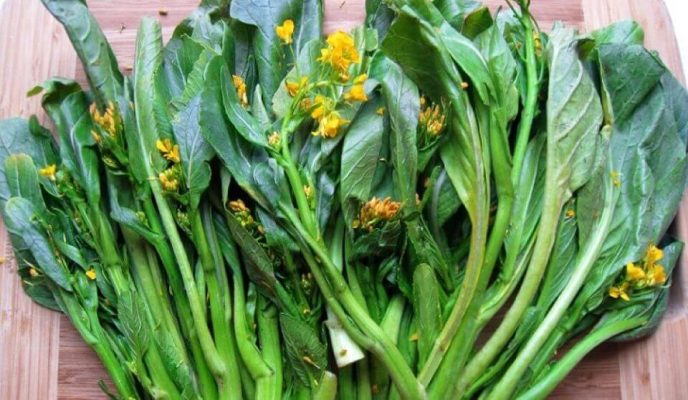
To eat mustard greens, people also cook common vegetables: they can be fried, boiled, or cooked as they like. But the best, most attractive way is still stir-fried with beef. To get a plate of fried mustard greens with delicious beef, it is necessary to choose something with small green stems. When stir-frying, remember to add ginger and do not stir-fry too well, making the beef chewy and the cabbage lose its flavor. This stir-fry dish is best eaten hot. The sweet and fragrant aroma of ginseng and the aroma of meat and ginger will make the eater rush to taste it as if afraid if not fast, the attractive flavor will dissolve into space.
Huu Lung Grilled Spring Rolls
Listening to spring rolls, many people will immediately think of Xu Thanh’s famous sour spring rolls. But Lang Son grilled spring rolls have a very special flavor (Only in the Huu Lung district). When peeled and put out to a plate, Nem is served with Dinh Lang tree leaves with a sour, sweet, and spicy sauce that creates a unique taste unique to Lang Son.
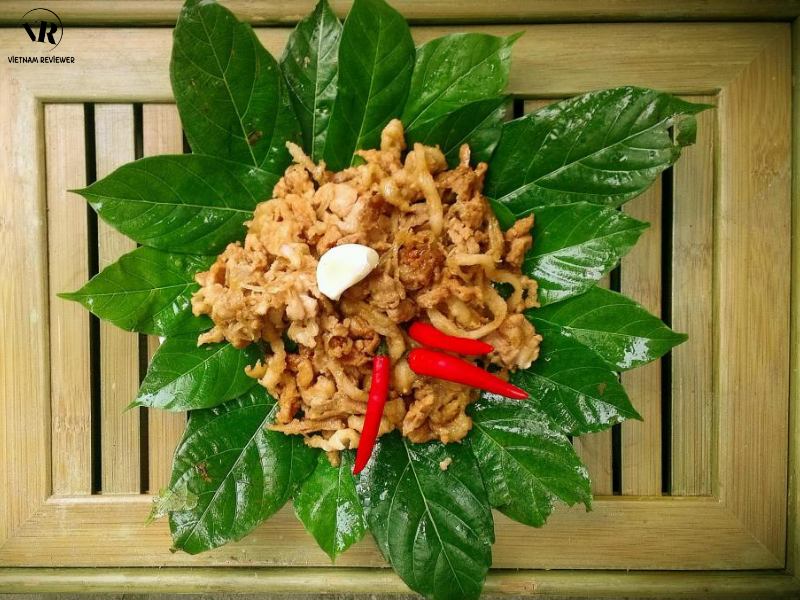
Ếch Hương
Another specialty in Mau Son is the incense frog. This is an extremely rare species of frog, with high culinary and economic value. The frog lives in a cave, along the streams and streams of Cong Son commune, Cao Loc district, and Mau Son commune, Loc Binh district. This frog breed is not different from normal frogs, but they have fat thighs larger than bronze frogs. With the ability to change colors to evade enemies, some are green as moss, so they are also called green frogs.
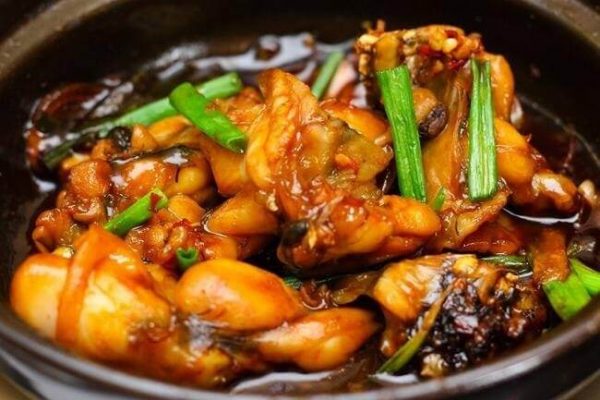
The frog meat is white and very delicious, especially with no fishy smell, even when it’s cooled. People also use frog meat to cook porridge, as delicious and delicious as chicken. If you want, you can order frog stir-fried with chayote, frog on flour, frog cooked with banana beans are also simple but attractive ways, the most popular is the fried frog.
Salmon Mau Son
After being tested many times unsuccessfully due to lack of experience and technology, In recent years, Mr. Hoang Van Ta, the owner of the Hoa Dao homestay, has gone to the localities where salmon are raised to learn from Experiment on Mau Son Mr. Ta has successfully tested, bringing premium cuisine originating from Europe to supply the needs of tourists, and at the same time creating a new destination for Mau Son, with The tourists want to explore and learn about the technical process of raising this fish, as well as provide the need to enjoy the unique taste of dishes made from Mau Son salmon.
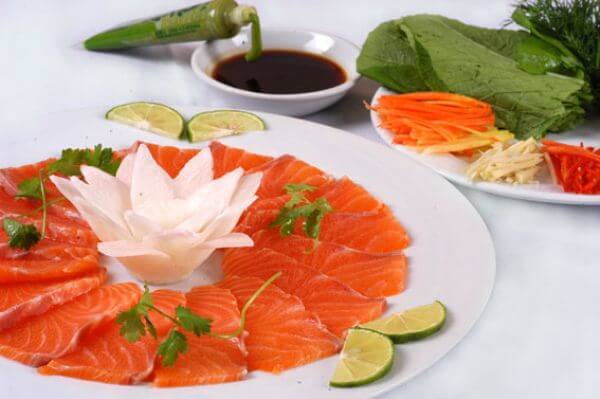
Lang Son specialties bought as gifts
Mau Son Wine
A unique and unique product of the Mau Son mountain region, Lang Son province is derived from rice wine products and pure water sources by the Dao people living at an altitude of 800 – 1000m above sea level, around the area. Distilled Mau Son mountain area, using leaf glaze and traditional distillation method of the Dao for hundreds of years.
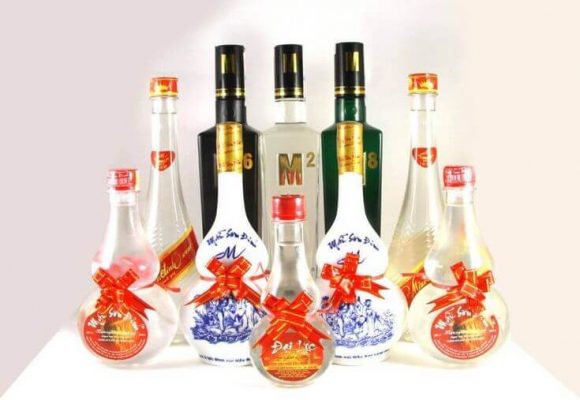
To distill this unique wine, in addition to the main ingredients are rice and spring water (taken from streams flowing in the mountains at an altitude of 1000m above sea level), the indispensable yeast is forest leaves. Yeast is made from more than 30 rare herbs such as Trees with 30 roots, water line, betel nut, sweet rope … has the effect of healing wounds, rheumatoid arthritis, back pain.
Forest honey
With the abundance of wildflowers and the diligence of the most hardworking animals in the animal world in the weather and climate, Mau Son has refined this unique natural product with a nourishing effect. The longer it is fragrant, the wild honey is crystallized into a natural substance that helps in good digestion. It is considered a valuable remedy for enhancing vitality, especially good for children and old age.
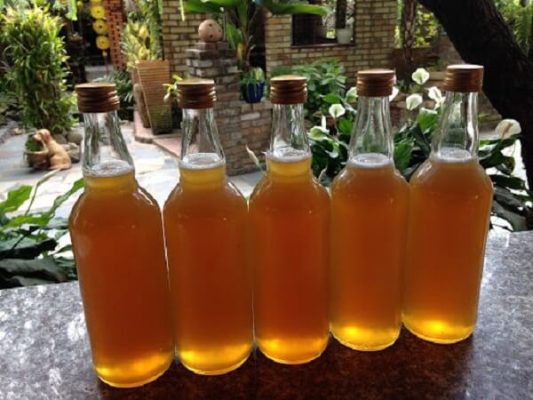
You can buy these precious honey bottles at Mau Son on Saturdays and Sundays from local people or at motels in the Mau Son tourist area.
Mau Son wormwood
An elixir of high mountains, refusing to grow at an altitude of 600m above sea level. This natural medicinal vegetable is full of unique flavors that can help you feel, help digestion, and fight headaches. Using traditional cooking methods, you can create many different foods – flavors.
Growing in any soil and mixed with other wild plants, Mau Son wormwood has a distinctly sweet taste that leaves on the tip of the tongue after eating. You can use wormwood leaves to skin your meals like mugwort noodles for breakfast, wormwood soup, or another simple dish, wormwood eggs. You can also ask the hotel staff to guide you on how to make wormwood cakes for the Tay and Dao people or bring them to relatives and friends as a unique tourist gift.
Peach Mau Son
Dao Mau Son is famous in the country for a long time for its color and flavor. Peaches are green-white, sweet but crunchy, with a characteristic mild aroma, so they are very popular in the market.
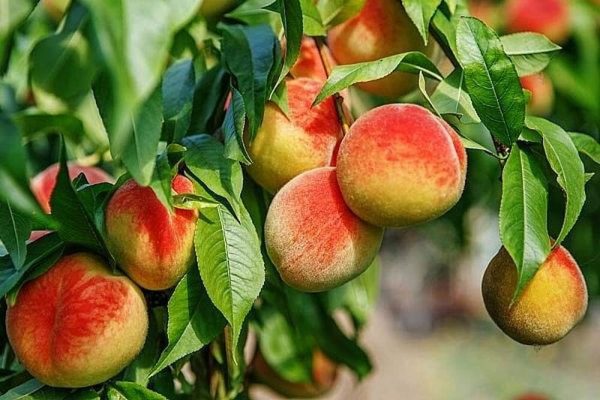
Mau Son cherry blossoms are discreetly beautiful. Each cherry blossom has only 5 petals, the color fades and the petals seem transparent. Interestingly, although the temperature at an altitude of 1000m is very low, Mau Peach still blooms approximately a month earlier than the mountain peaches.
Lemon Forest Mau Son
Forest lemon is endemic to the Mau Son area, with large canopy trees, large leaves but small, fragrant fruit. This fruit is often used to soak as a spice used in meals. In addition, the lemon forest is also used as medicine to relieve and treat coughs very well.
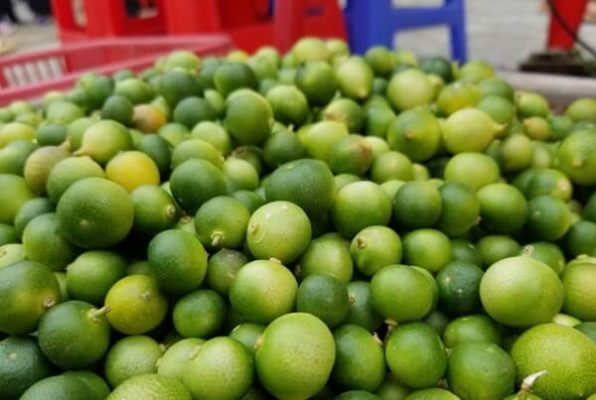
Na Chi Lang
At the end of August, the beginning of September, when the autumn weather is cold, it is also time to ripen. Lang Son is considered to be one of the largest “Vựa Na” in the country. And Kai Kinh karst in two districts Huu Lung and Chi Lang is the kingdom here.
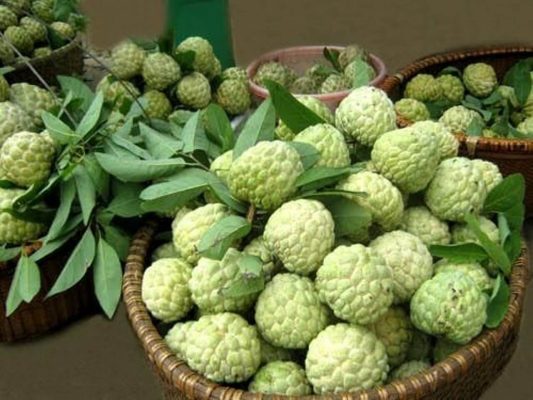
Na Chi Lang’s eyes are pink, the fruit is big, round, shiny, and sweet. To move the nautical fruits down from the top of the mountain, people have made pulleys running from above to the foot of the mountain, so sometimes tourists also call this specialty “Na Đu Dây”. To be transported throughout the country, the custard apple is harvested about 1 month before ripening because if it is until the day of maturity, it cannot be stored for long-distance transportation.
Mắc Mật
Apricot is also known as mountain scrotum or monkey tuber. Molasses fruit can be eaten fresh or used for cooking, stocked in some dishes, the leaves are infused with aromatic oils, so sugar is used as a spice in roasted duck, roast pork,… Bile leaves and fruits are spices. It is important to contribute to the success of many famous dishes of the country such as Roast Pig, Roasted Duck, Bamboo Shoot,…
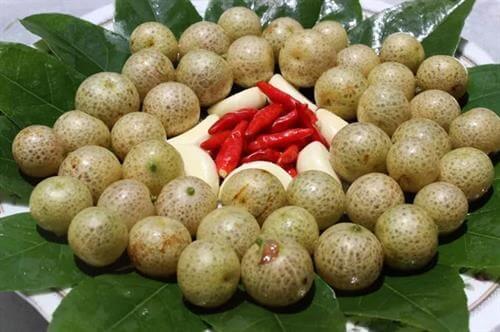
Bánh Khảo Tràng Định
In Trang Dinh (Lang Son), during the Tet holidays, almost every family makes cakes to place on the altar to worship their ancestors, to make dishes for New Year’s guests, or to give gifts to relatives and friends near and far.
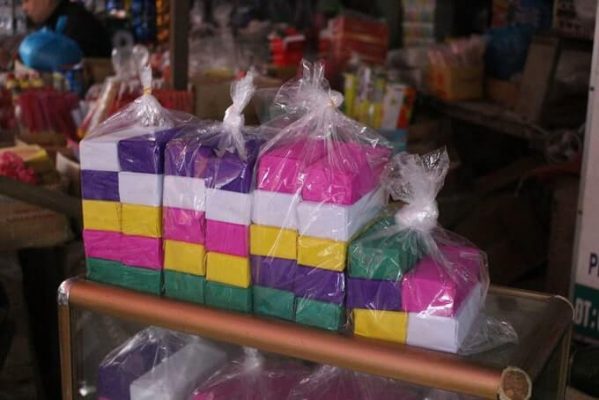
The cake is a custom of the Tay and Nung people here. The rice cake is not only a snack or gift but is also used as a dry salary. People who go to the fields often bring this bread to eat against hunger, but they do not get sick after Tet with a lot of meat and fat.
Hong Bao Lam
Bao Lam seedless persimmon variety is a famous persimmon variety grown for a long time in Bao Lam commune, Cao Loc district, and neighboring communes of Cao Loc and Van Lang districts, Lang Son province. In which, Bao Lam seedless persimmons give higher yield and quality, and this is also the “cradle” of this fruit. When the specialty persimmon varieties are grown, no one knows when, even the seniors over 80 – 90 years old do not know. Therefore, Bao Lam seedless persimmons can be considered as indigenous cultivars of Lang Son province.
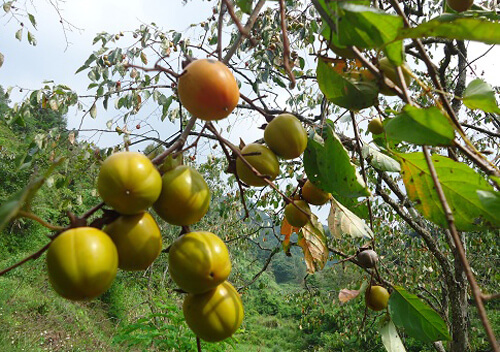
Seedless persimmons Bao Lam has a crisp, fragrant, and darkly sweet fruit flesh; the cross-section of the fruit has an asterisk of 8-12 evenly, dark red-yellow, and these asterisks are formed by thin seeds; The longitudinal section has no grain, smooth flesh, almost no black spots, no seeds.
Tangerine Bac Son
Tangerines grown in the valleys and hillsides of Bac Son district have long been famous everywhere for their delicious taste, bold mountains, and forests.
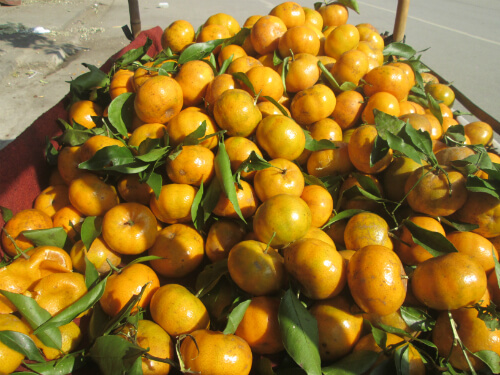
Due to being grown in a large area in the mountainous district of Bac Son, there are two types of tangerines: round and flat, suitable for the soil in each place. Tangerines, when ripe, have a yellow color, thin skin, peeling, little texture, sweet, fragrant, weight 80-150g, when peeling there is a hole in the middle of the fruit.
Cultural festivals in Lang Son
Lang Son is a mountainous border province with 253 km of borderline, with national and international border gates, a gateway for economic and cultural exchange with neighboring China. These are the basic foundations that make up the cultural diversity and richness of Lang Son province. For thousands of years, with the will of independence and self-reliance, the people of all ethnic groups in the province have promoted and preserved their national cultural identity, integrated with the Vietnamese ethnic community. Today, Lang Son traditional cultural heritages have become typical features of Vietnamese culture. In addition, Lang Son is also a locality that preserves a rich treasure of folk arts (legends, tales, folk songs, proverbs, …), the convergence and exchange land of 7 ethnic groups, Nung, Tay, Kinh, Dao, Hoa, San Chay, Mong, … With the available geographical advantages and cultural traditions, Lang Son culture has created its own unique character and left a deep impression on your heart. every time tourists come to Lang Son.
Xu Lang is also home to many fascinating and interesting traditional festivals. Over thousands of years of building villages and defending the country, the people of Lang Son ethnic groups have created a rich and diverse cultural tradition. From that cultural cradle, the Lang Son festival has both the characteristics of the traditional festival of Vietnam and the North Vietnam region and has its nuances. Every year in Lang Son, there are more than 300 big and small festivals. The festivals usually take place in spring, from January to April of the lunar calendar every year
Some notes when traveling to Lang Son
In the markets in Lang Son, if you see that tourists will scream very high prices, so just forcefully bargain or you will be able to go home with an item with the equivalent price or even higher.
You should not buy electronics, but only buy some items such as blankets, clothes … because the electronics here are all low-quality Chinese items, buying will be almost unusable and then lose money. injustice.
Always carry your passport if you go to the border areas, maybe at times you want to cross the border to play.
If you go to Mau Son, remember to call the hotel in advance to inform the number of people and order food in advance to arrive at the place without having to wait long, only when there are guests, they will prepare. Suggestions for you to stay at Yen Yen guesthouse, a house built on a unique mountain slope with 3 sides bordering the forest.
Lang Son travel schedule
Tour 1: Hanoi – Lang Son – Mau Son – Bac Son
The total journey is about 500km for 3 days, you can go by motorbike or private car. This schedule is not suitable for public transport.
Day 1: Hanoi – Lang Son – Mau Son
From Hanoi to Lang Son, wandering around Lang Son City playing some places like Tam Thanh, Nhi Thanh
In the afternoon, the car went straight to Mau Son to rest. If the team is crowded, they can organize a campfire, evening exchanges. Enjoy delicious food at Mau Son. Do not forget to reserve the guest house in Mau Son so that the inn will still prepare food and drinks, there is no place to sell food up there at night.
Day 2: Mau Son – Huu Nghi – Bac Son
Get up in the morning, clean the things, buy some Mau Son specialties as gifts, then turn back toward Lang Son City, go straight to Dong Dang and stop to visit Huu Nghi border gate.
Finished swept down will continue to go straight Bac Son. Evening to sleep on stilts homestay in Bac Son, enjoy delicious food here
Day 3: Bac Son – Hanoi
Get up early in the morning and walk up to Na Lay mountain to hunt for pictures of Bac Son valley. If you go in winter and want a nice place to take pictures, you should spend the night in the mountains as well.
After hunting, you can hang out and play at Dang Mo Waterfall (about 30km from the center).
After lunch and rest, then depart back to Hanoi along with NH1B and NH3 (via Thai Nguyen).
Tour 2: Hanoi – Mau Son – Hanoi
Since Mau Son is not too far away, you can take a trip to Mau Son in just 2 days.
Day 1: Motorbike from Hanoi – Lang Son – Mau Son (200km) Highway 4 to Lang Son is quite beautiful, so travel time is quite fast, if starting from the morning you can enlist to visit some places tourist attractions in Lang Son in advance. Evening up to Mau Son, check-in the hotel, walk around the top of the mountain to take pictures, in the evening you can buy firewood for campfire and conduct some exchange activities. If you take a bus from Hanoi to Lang Son, you can rent a taxi directly to Mau Son, remember to negotiate the price directly with the driver at the destination.
Day 2: Walking around Mau Son, you can trek or use a motorbike to go to some Dao villages on the way down the mountain such as Khuoi Cap, Khuoi Tan, walking around Long Dau stream, visit Phap Chi mountain and ancient Linh site Mau Son. These places you can go to most of the day, go down the mountain, and return to Hanoi.
Related Article: Traveling experience in Ban Gioc Waterfall that tourist should know
Let start your trip to Lang Son with us! If you have any feedback or need help, please send an email through vietnamreviewer.contact@gmail.com!

